Complete Solutions to Illustration of chapter ALCOHOL,PHENOL AND ETHERS of Class 12 book with complete answers and questions
| Class 12 | CHEMISTRY |
| Chapter | ALCOHOL,PHENOL AND ETHERS |
| CENGAGE CHEMISTRY | Illustration |
| Number Of Questions | 35 |
| Academic Year | 2023-24 |
Arrange the following compounds in the decreasing of their boiling points and solubilitiy in `H_(2)O`.
a. (I) Methanol (II) Ethanol (III) Propan-1-ol (IV) Butan-1-oI (V) Butan-2-oI (VI) Pentane-1-oI
b. (I) Pentanol (II) n-Butane (III) Pentanal (IV) Ethoxy ethane
c. (I) Pentane (II) Pentane-1,2,3,-triol (III) Butanol
d. (I) Butane (II) Butanol (III) Pentanol
e. (I) Pentan-1-oI (II) 2-Methyl butan-2-oI (III) 3-Methyl butan-2-oI
f. (I) n-Butyl alcohol (II) sec-Butyl alcohol (III) t-Butyl alcoholView SolutionWhich has higher boiling point ?
(I) Phenol (II) Benzenethiol
b. Which has higer melting point ?
(I) Hydroquinone (II) Catechel
c. Explain the less solubility and lower boiling point of:
(I) 0-Nitrophenol
(II) 0-Hydroxy benzaldehyde
(III) 0-Hydroxybenozioc acid (salicylic acid) compared with their p- and m- isomers.
d. Which isomer (o, m-, or p) of hydroxy acetophenone is steam volatile ?
e. Which of the following shows chelation ?
(I) 0-Cresol (II) Oil of wintergreen (III) 0-lodo phenol (IV) 0-Fluoro phenol (V) 0-Cyano phenol
f. Why are the dipole moments of phenol `1.7 D)` and methanol `(1.6 D)` in opposite direction ?
g. Why is the dipole moment of p-nitro phenol `(5.0 D)` is reater than of nitro benzene `(4.0 D)` or phenol ?
h. Why is the `(C----O)` bond in alcohol larger than in phenol ?
i. Compare the boiling points and water solubilities of phenol and toluene.
j. Why are monophenolic compounds (e.g., cresols) are insoluble in `H_(2)O` ?
k. Which is more soluble in `H_(2)O` : hexanol (I) or cyclohexanol (II) ?18:42View Solution(a)
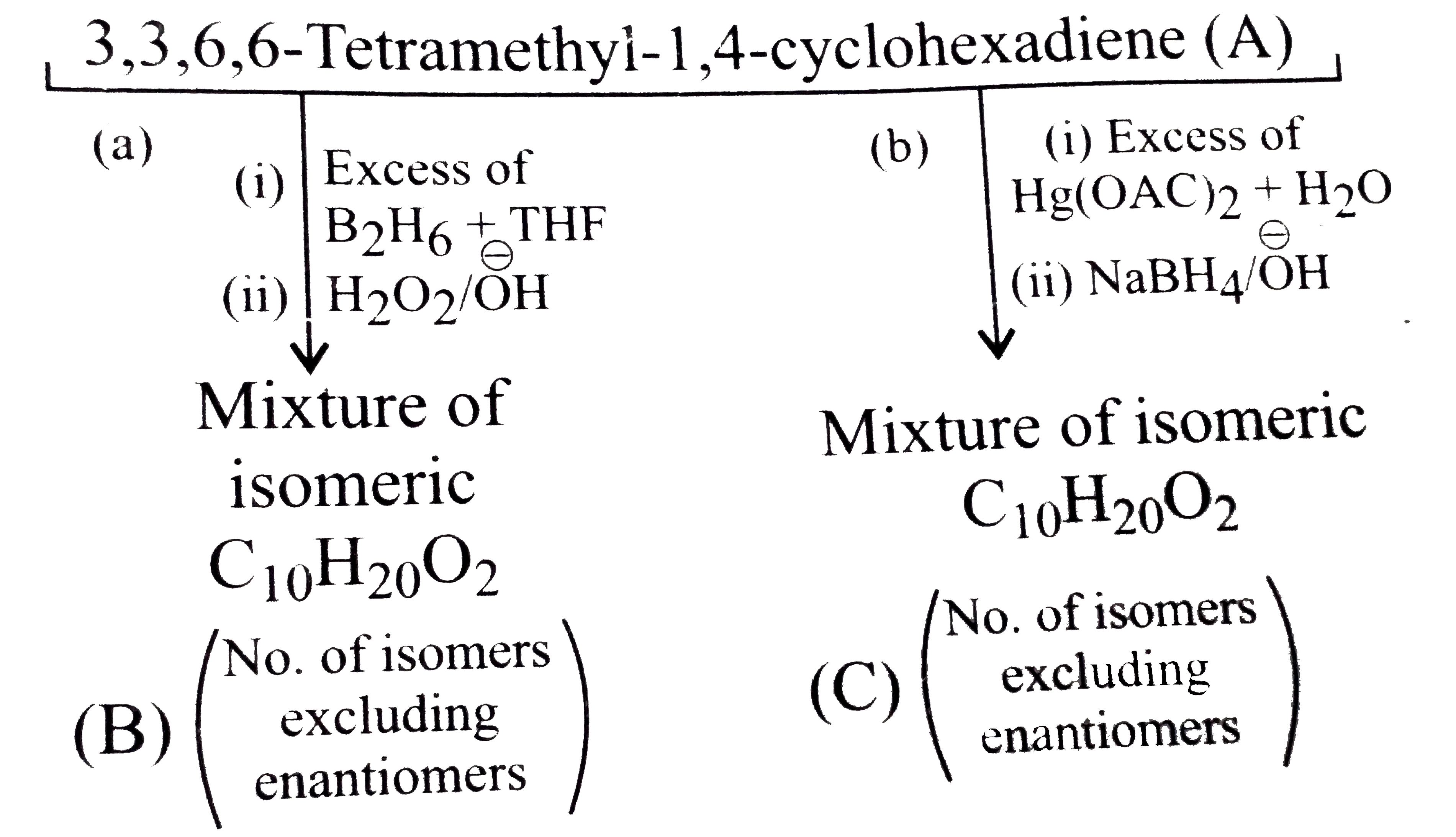
What are the numeriacl values of (B) and (C) ?06:00View Solution`overset (Cyclobutyl ethene) underset ((A))` `overset (Dil. H_(2)SO_(4)) rarr` (B) (Number of isomeric products including stero-isomers)
07:57View SolutionComplete the following :

 View Solution
View SolutionSynthesise the following :
a. Butene to butanol and butan-2-ol
1-Chloro propane to pentanol and pentan-2-ol
c. Benzene to 3-(4-chorophyl propan-1-ol)
e. Ethyne to butanol
Propane to allyl alcohol
f. Propane to allyl acohol
g. Propane to propanol and propan-2-olView SolutionComplete the following :
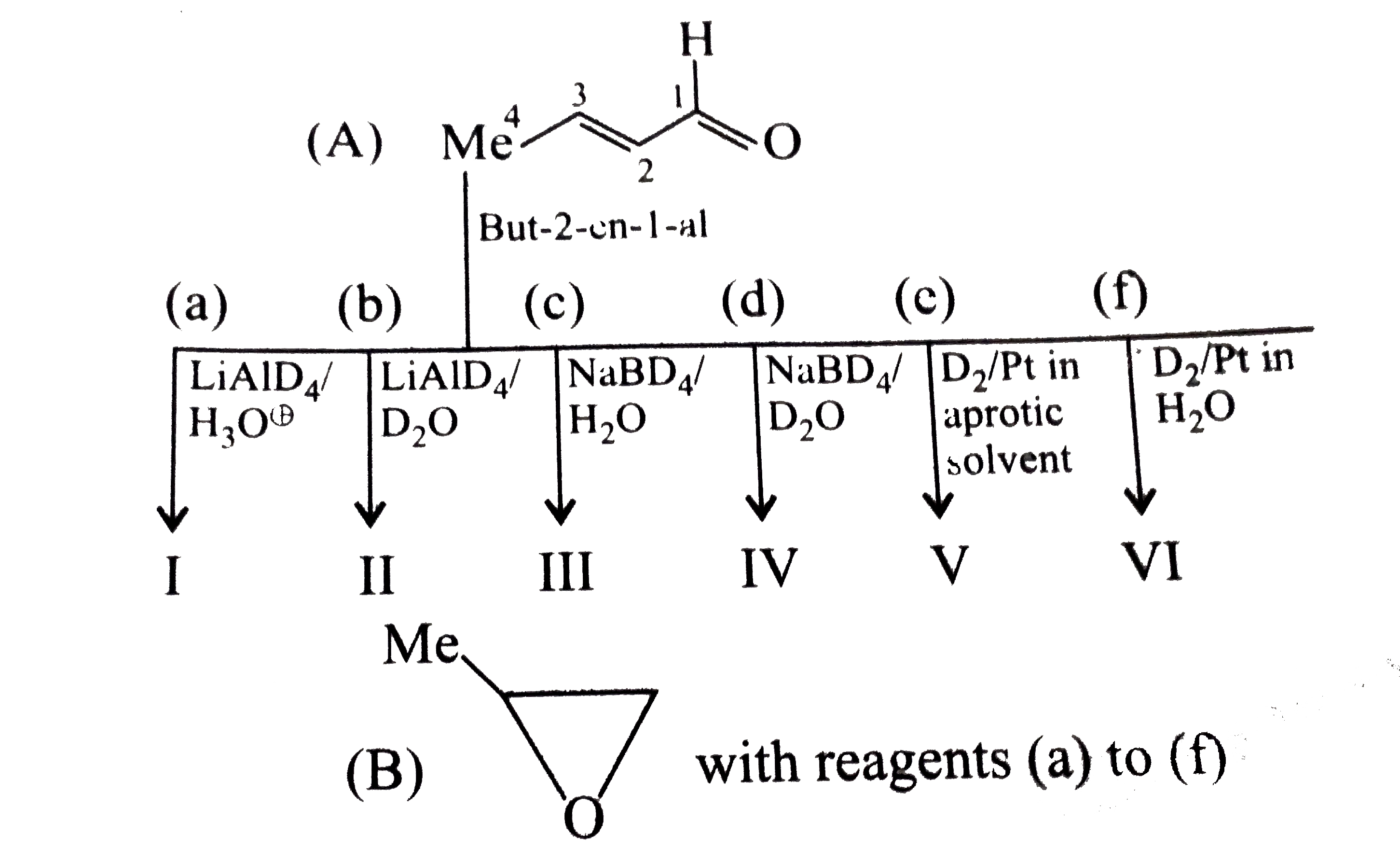 10:09View Solution
10:09View SolutionComplete the following reactions:
a. `overset (Benzen e) underset ((A))` `overset (Ac_(2)O) underset (+AICI_(3)) rarr` (B) `overset ((i) MeMgBr) underset ((ii) H_(3)O^((+))) rarr` (C) `overset (Conc.) underset (H_(2)SO_(4))` (D) `overset (1. BH_(3)//THF) underset (2. H_(2)O_(2)//O^((-))H) rarr` (E)
b. `overset (MeCH_(2)Br) underset ((A))` `overset (alc.) underset (KOH) rarr` (B) `overset (Br_(2)) rarr` (C) `overset (2NaNH_(2)) rarr` (D) `overset (RMgBr) underset (1 mol) rarr` RH + (E) `overset (1. Acetone) underset (2. H_(3)O^((+))) rarr` (F)
c.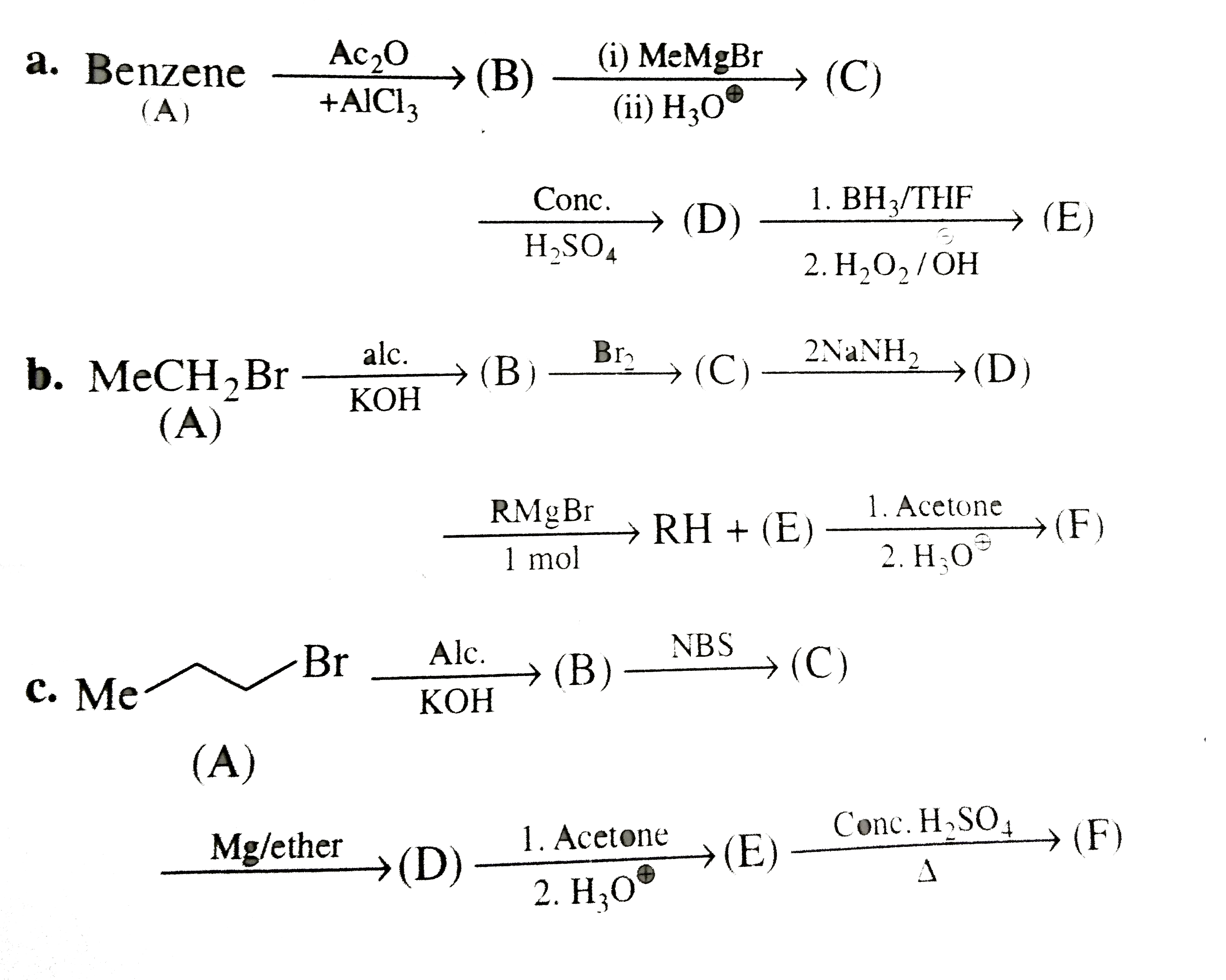 `overset (A1c.) underset (KOH) rarr` (B) `overset (NBS) rarr` (C)
`overset (A1c.) underset (KOH) rarr` (B) `overset (NBS) rarr` (C)
`overset (Mg..ether) rarr` (D) `overset (1. Acet on e) underset (2. H_(3)O^((+))) rarr` (E) `overset (conc. H_(2)SO_(4)) underset (Delta) rarr` (F)16:38View SolutionComplete the following reaction :
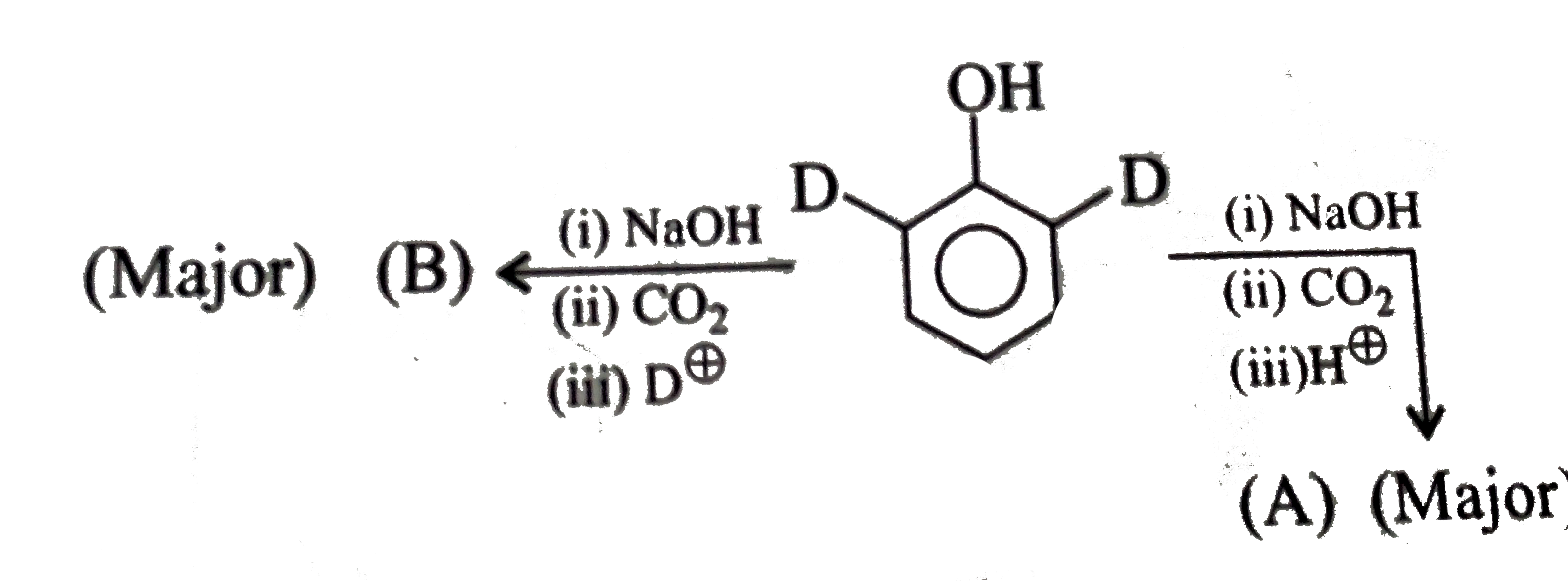 06:16View Solution
06:16View SolutionComplete the following reactions:
a.
b.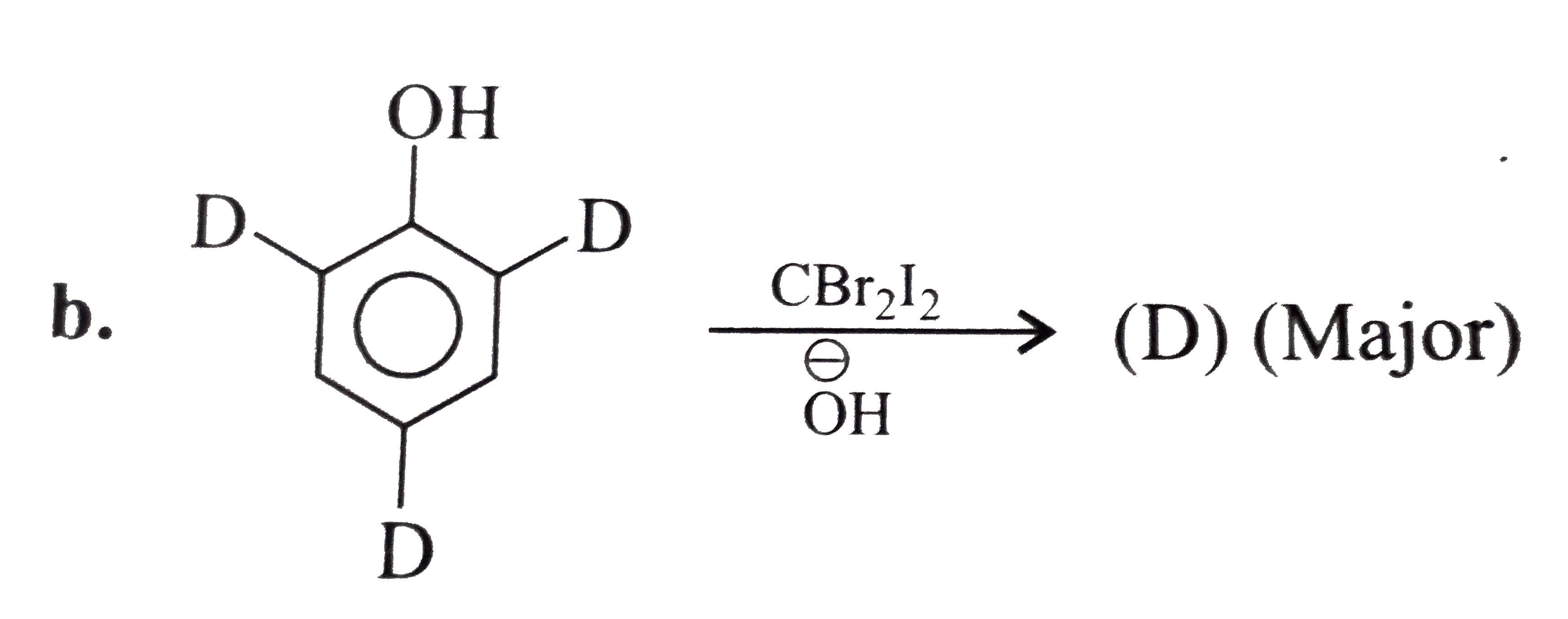
c.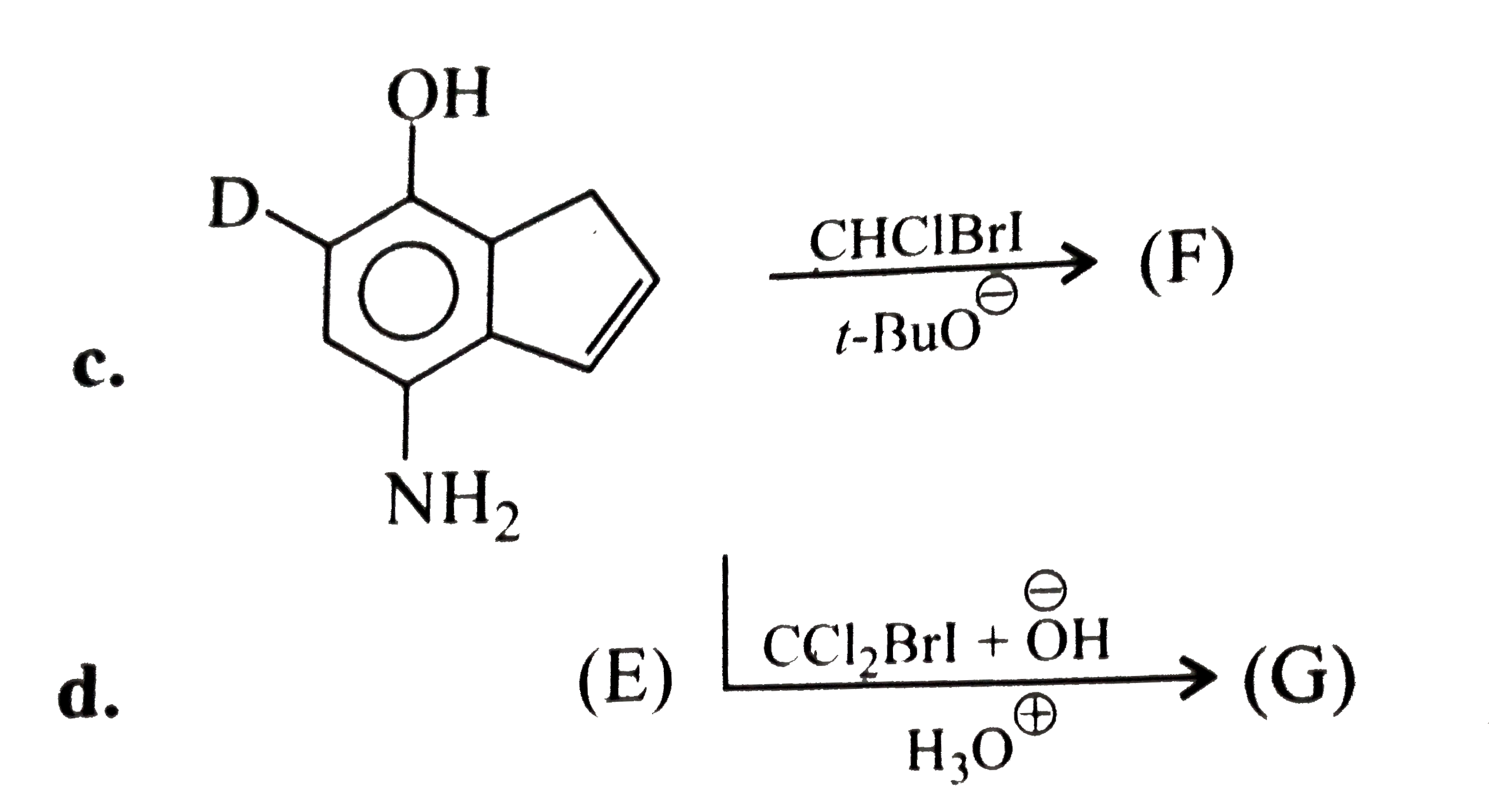 21:30View Solution
21:30View Solution`0.218` gm of the acetyl derivative of a polyhydric acohol (molecular mass = 92) requires `0.168` gm of KOH for hydrolysis. Calculate the number of `(--OH)` groups in the alcohol.
05:49View Solutiona.
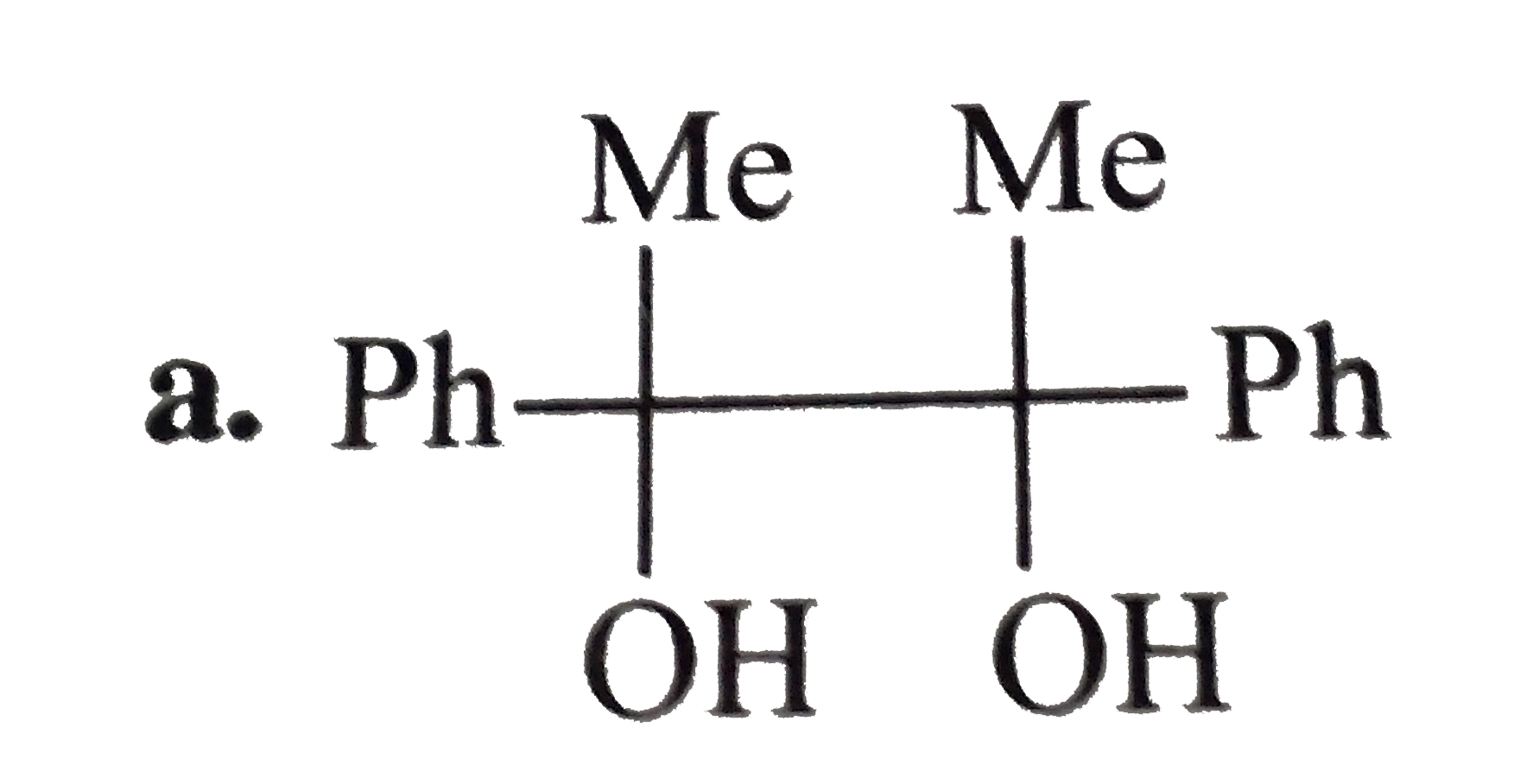 b.
b. 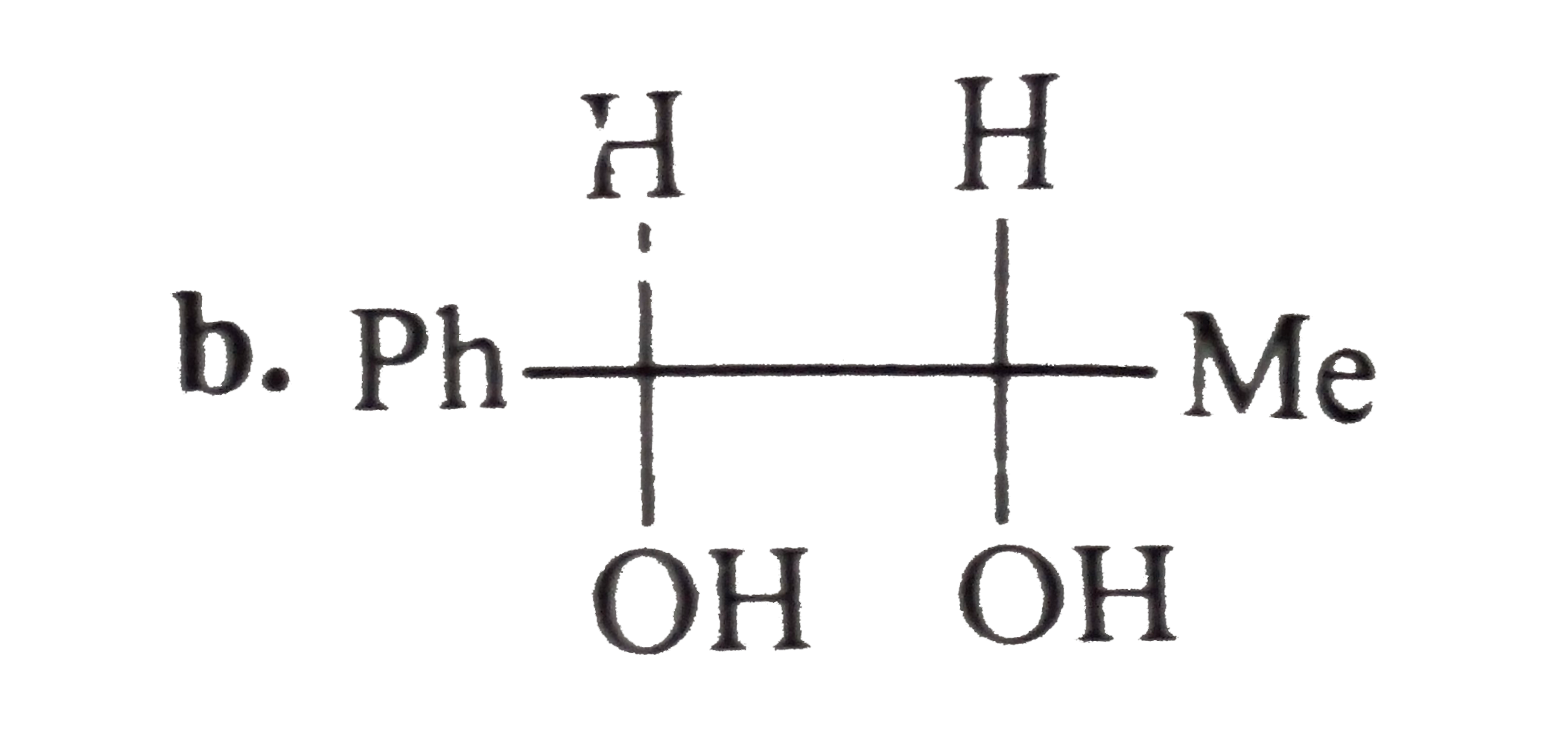
c.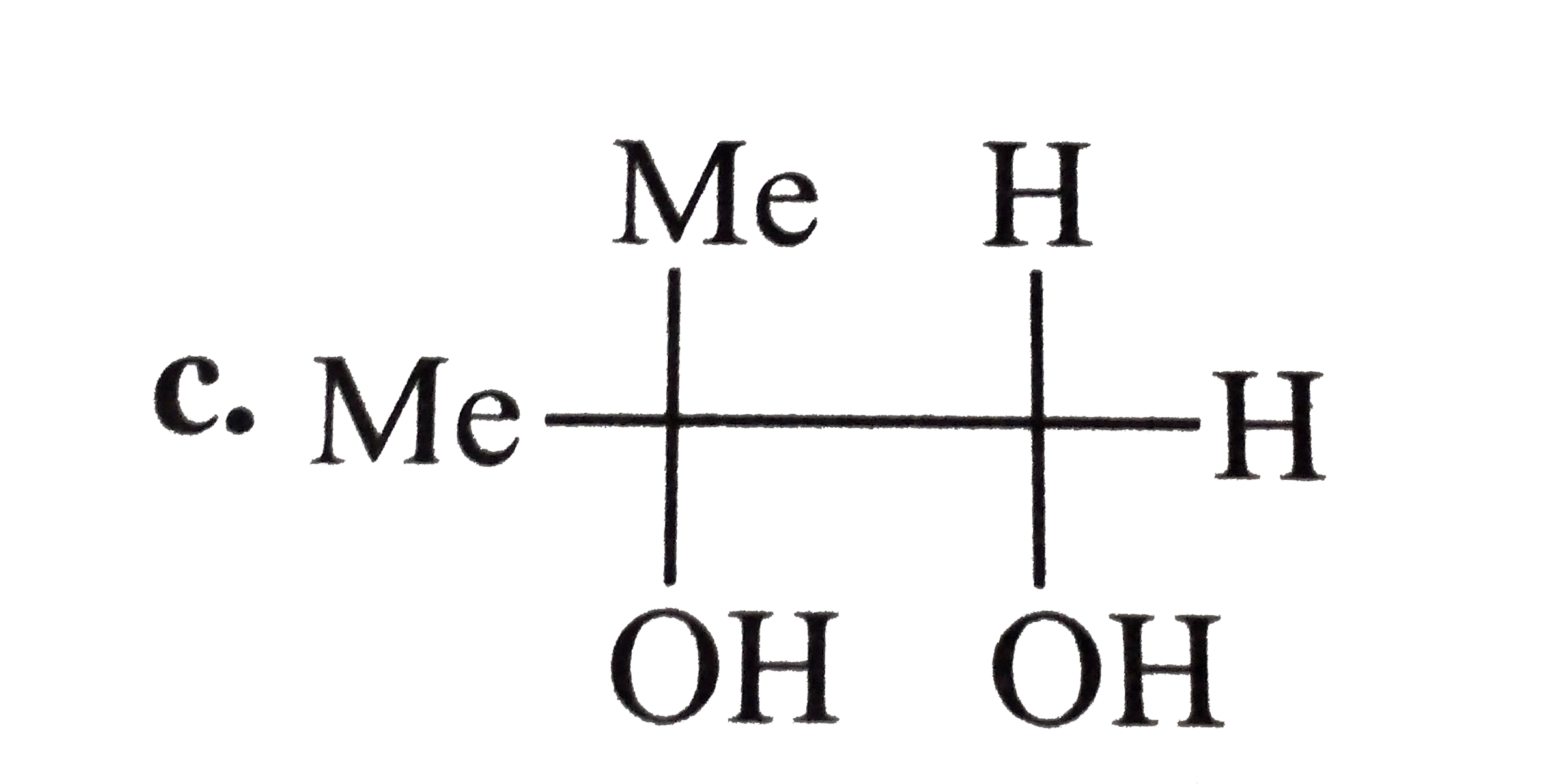 d.
d. 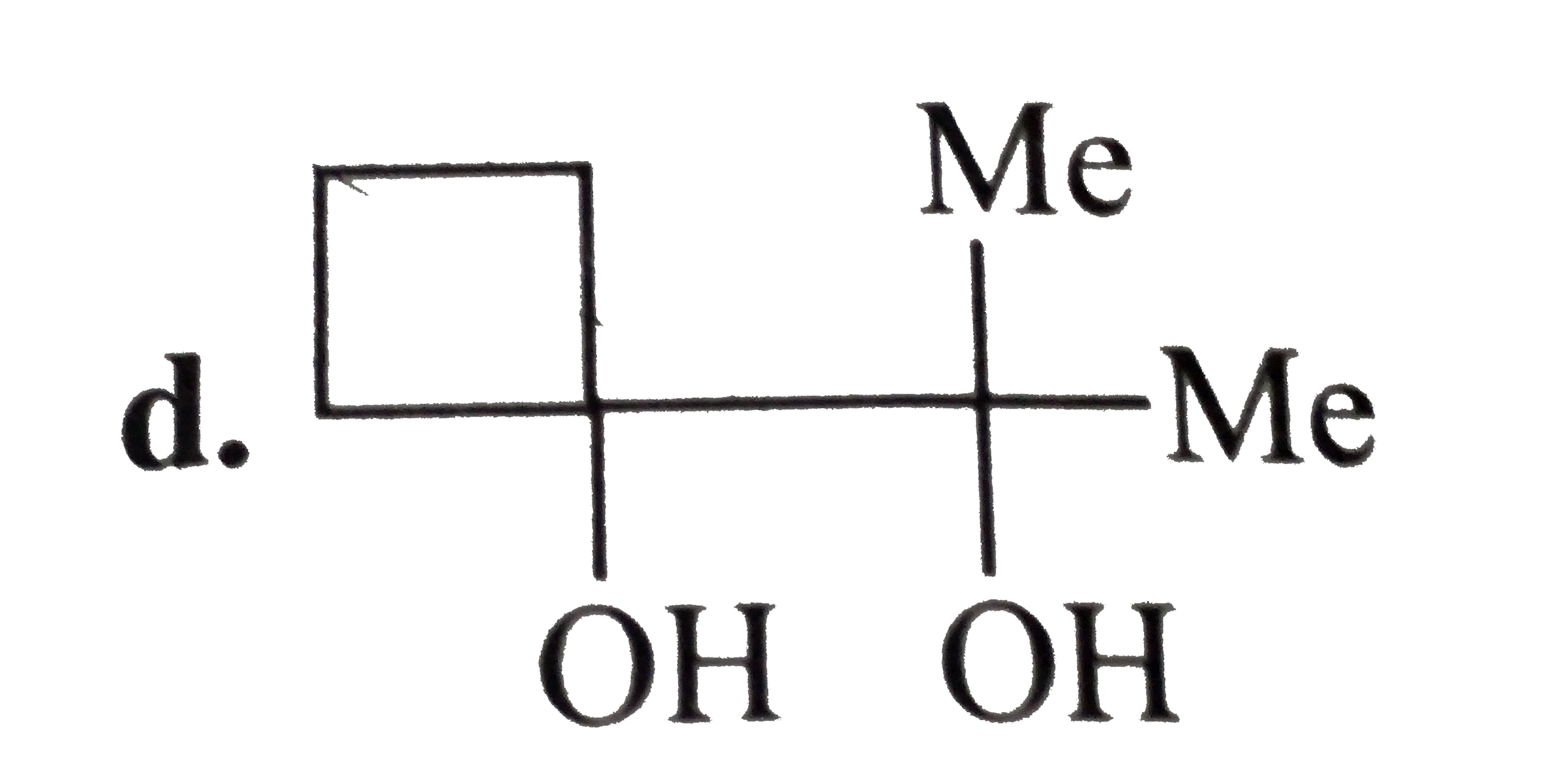
e.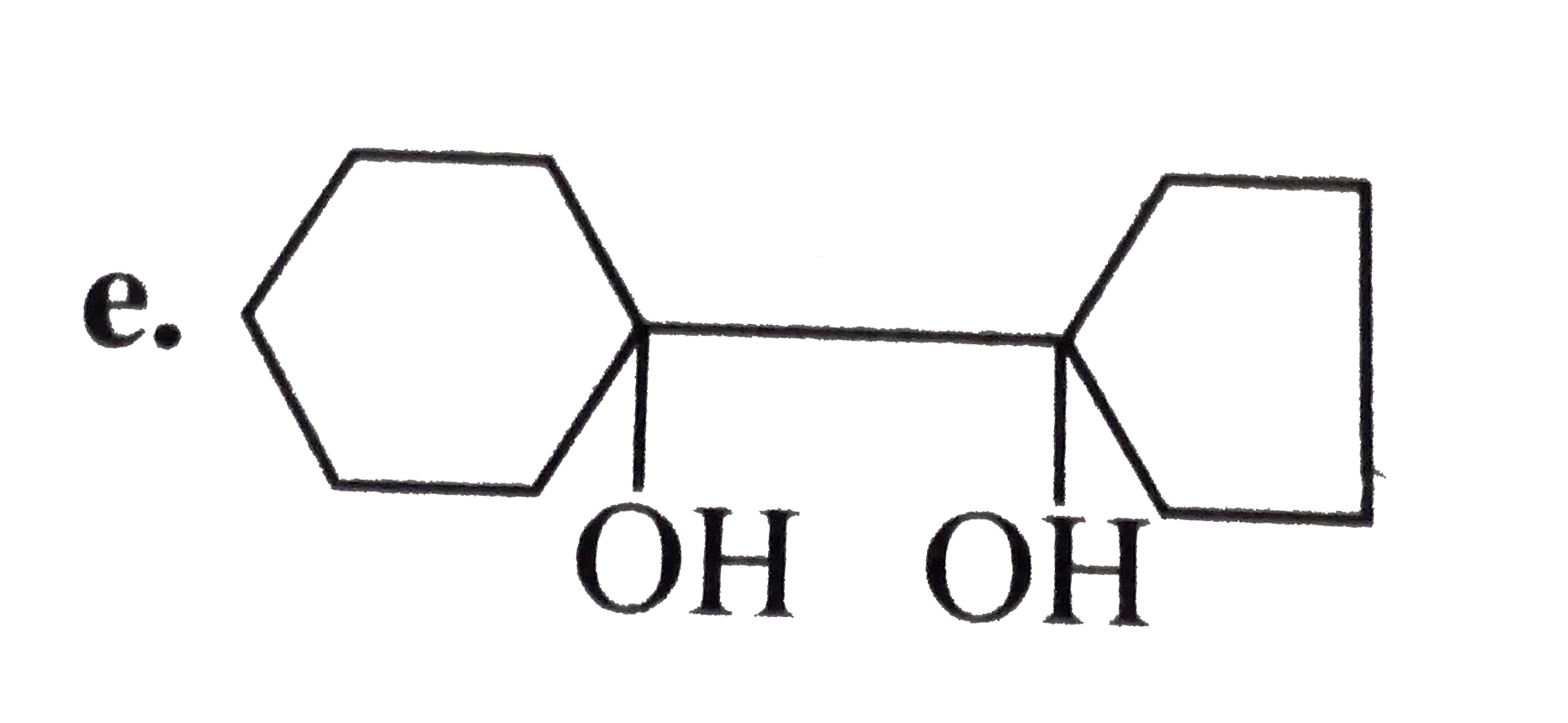 f.
f. 
g.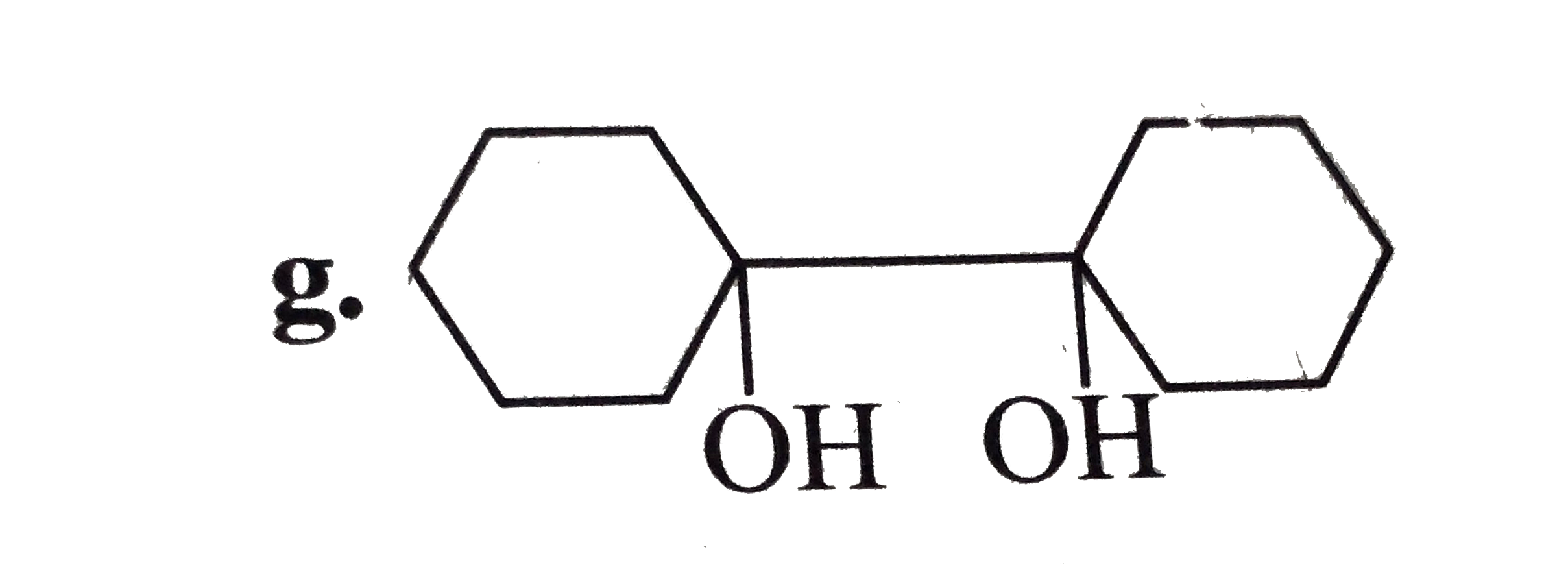 h.
h.  16:16View Solution
16:16View Solutiona.
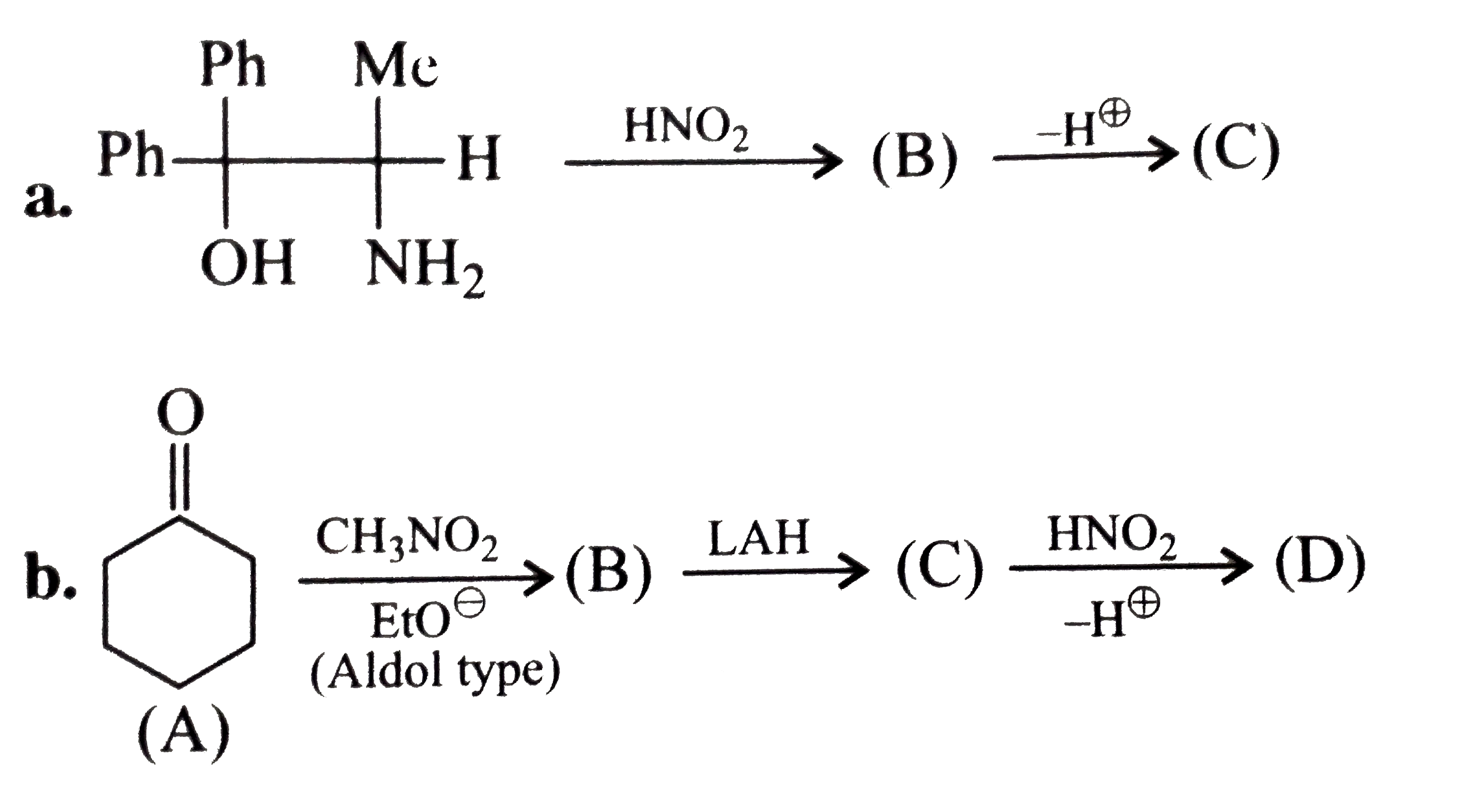
b.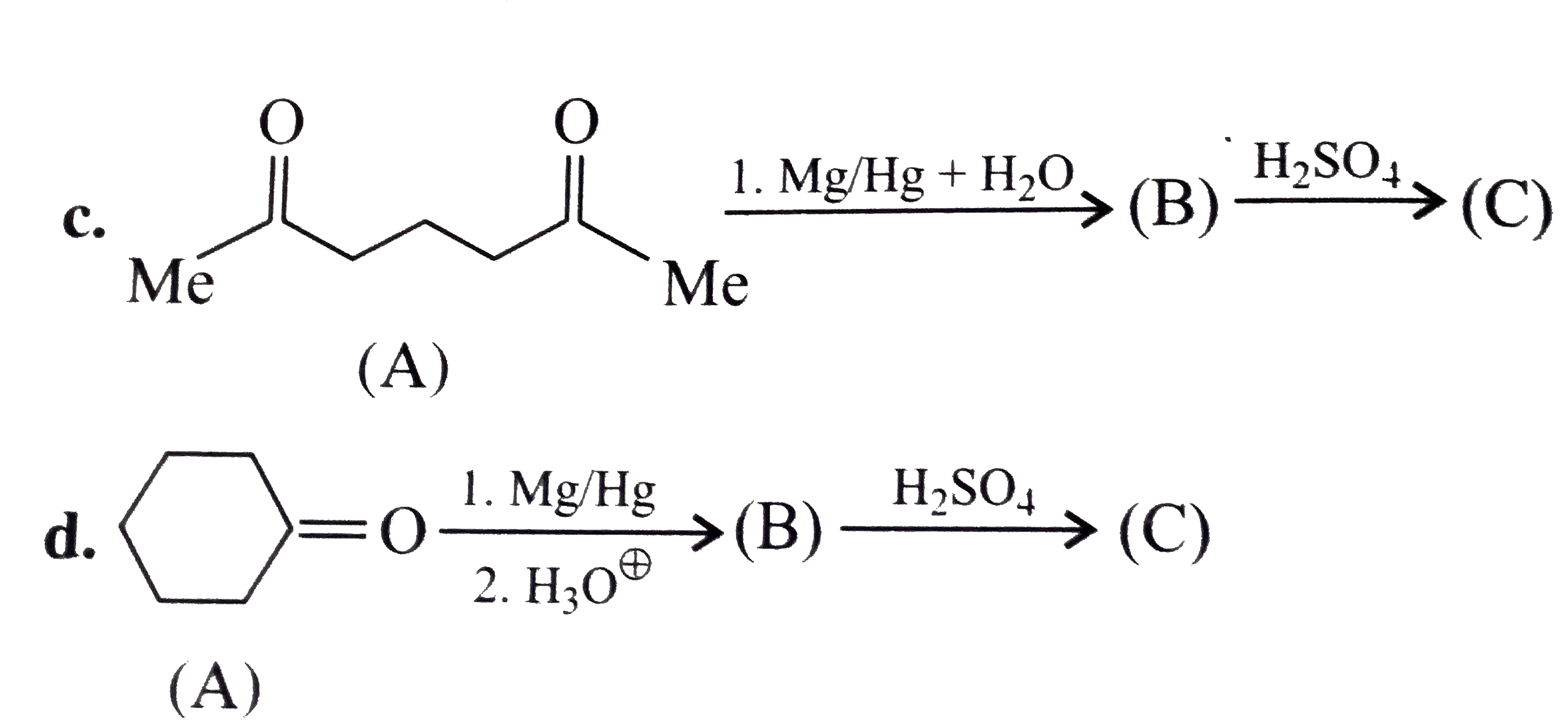 09:18View Solution
09:18View SolutionGiven products of the following:
a.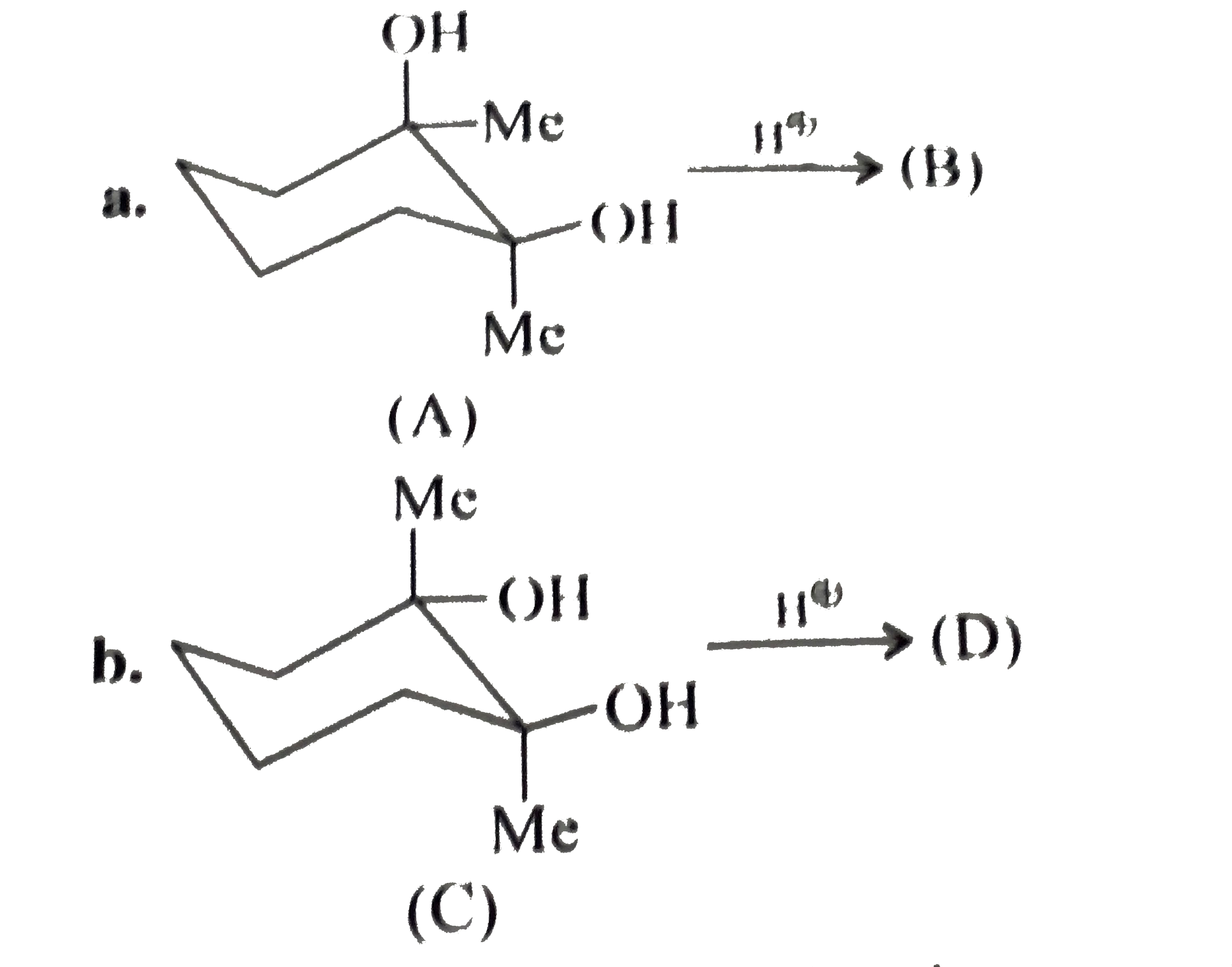 05:47View Solution
05:47View SolutionSynthesies the following ethers, selec-ting the given methods.
(I) Williamson's synthesis
(II) Alkoxy mercuration-demercuration
(III) Intermolecular dehydration
Given reasons for the selection of the method.
a. Divinyl ether
b. Dicyclohoexyl ether
c. Propyl sec-butyl ether
d. 1-Propoxy-2-methyl propane
e. 1-(3-Mrthyl butoxy)-3-methyl butaneView Solutiona. Given the decreasing order of Lewis basicities of the following:
i.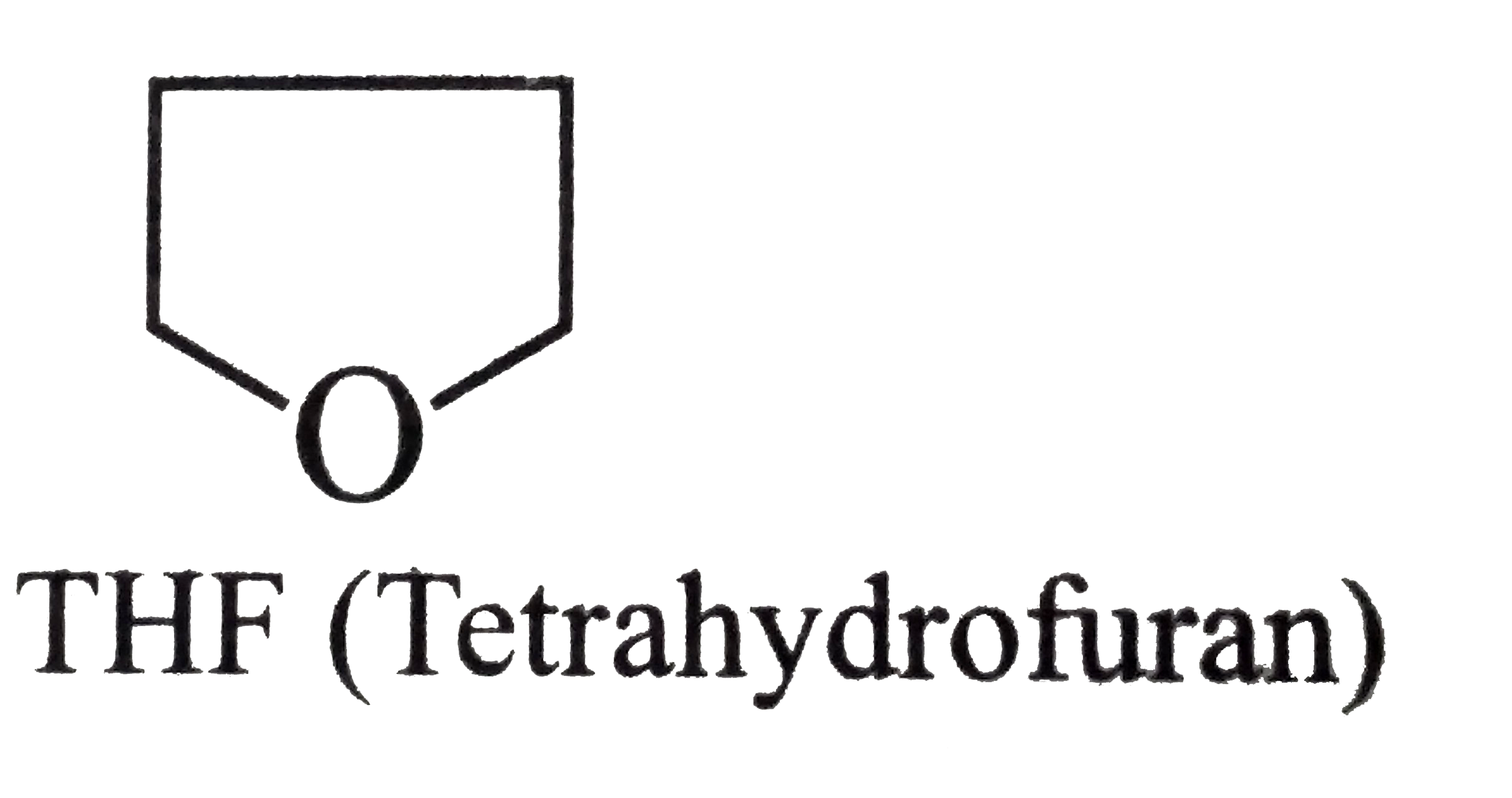 ii. `overset (C_(2)H_(5)--O--C_(2)H_(5) underset (Dirthyl ether)`
ii. `overset (C_(2)H_(5)--O--C_(2)H_(5) underset (Dirthyl ether)`
iii.
b. i.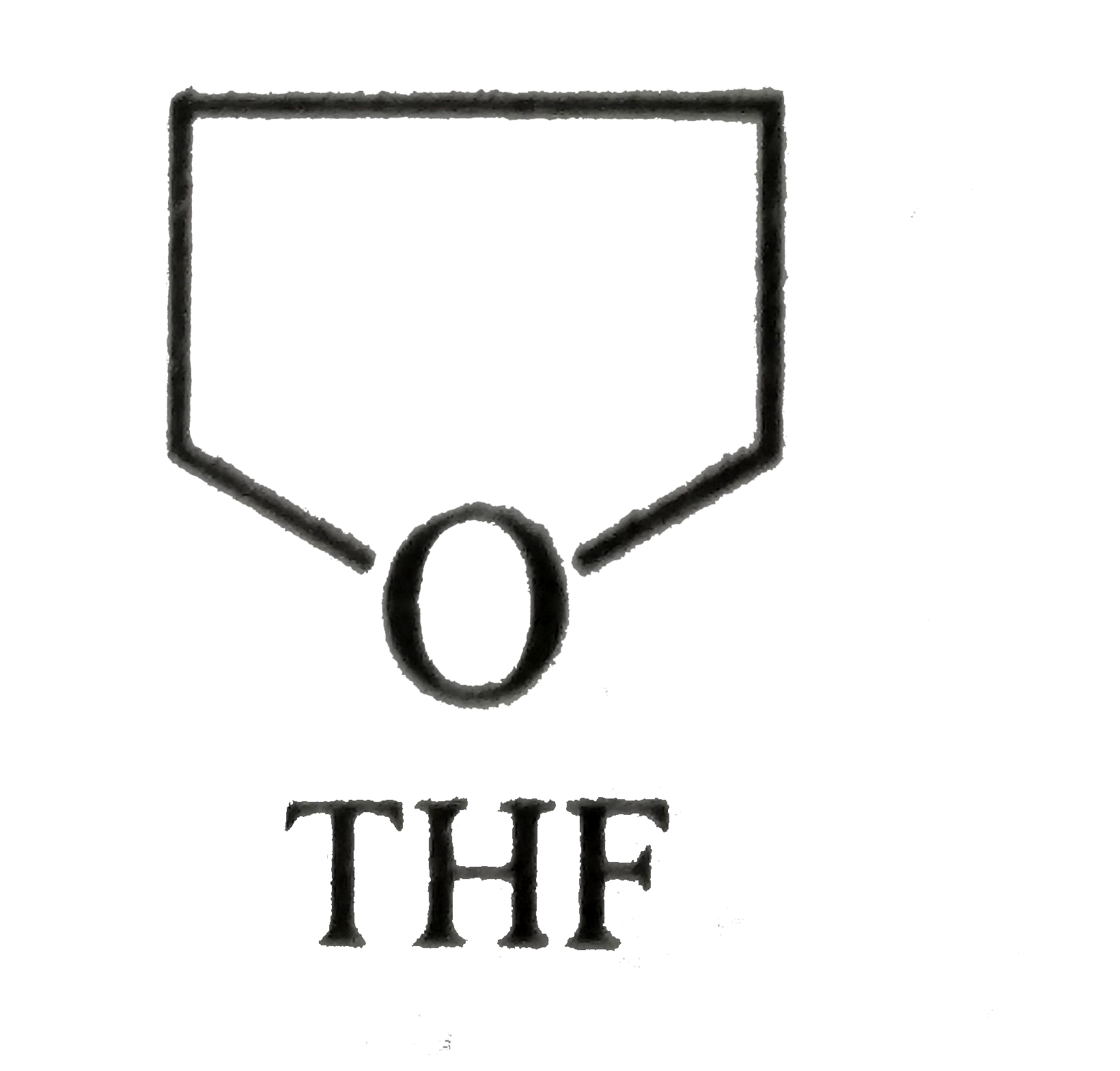 ii.
ii. 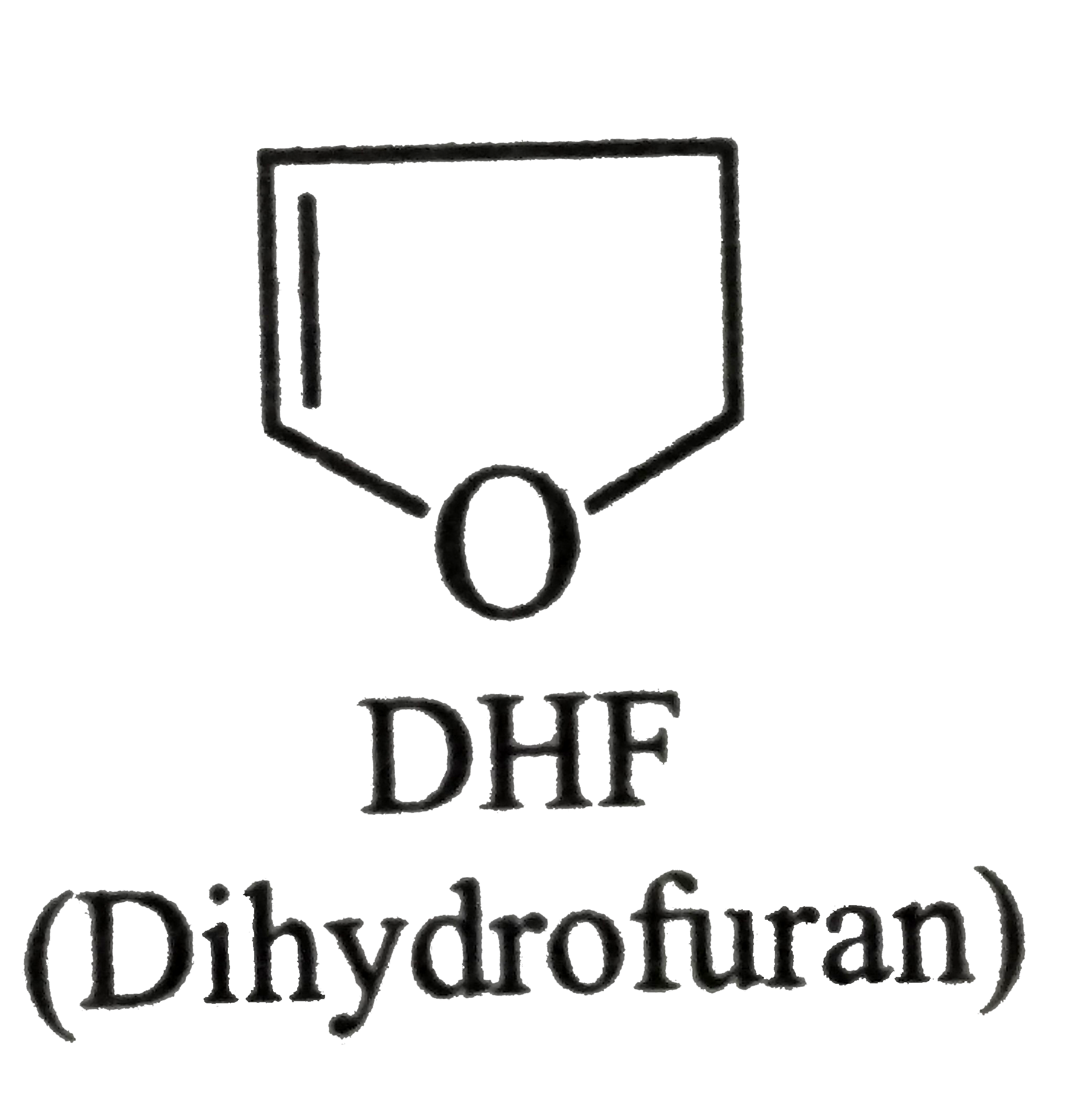 iii.
iii. 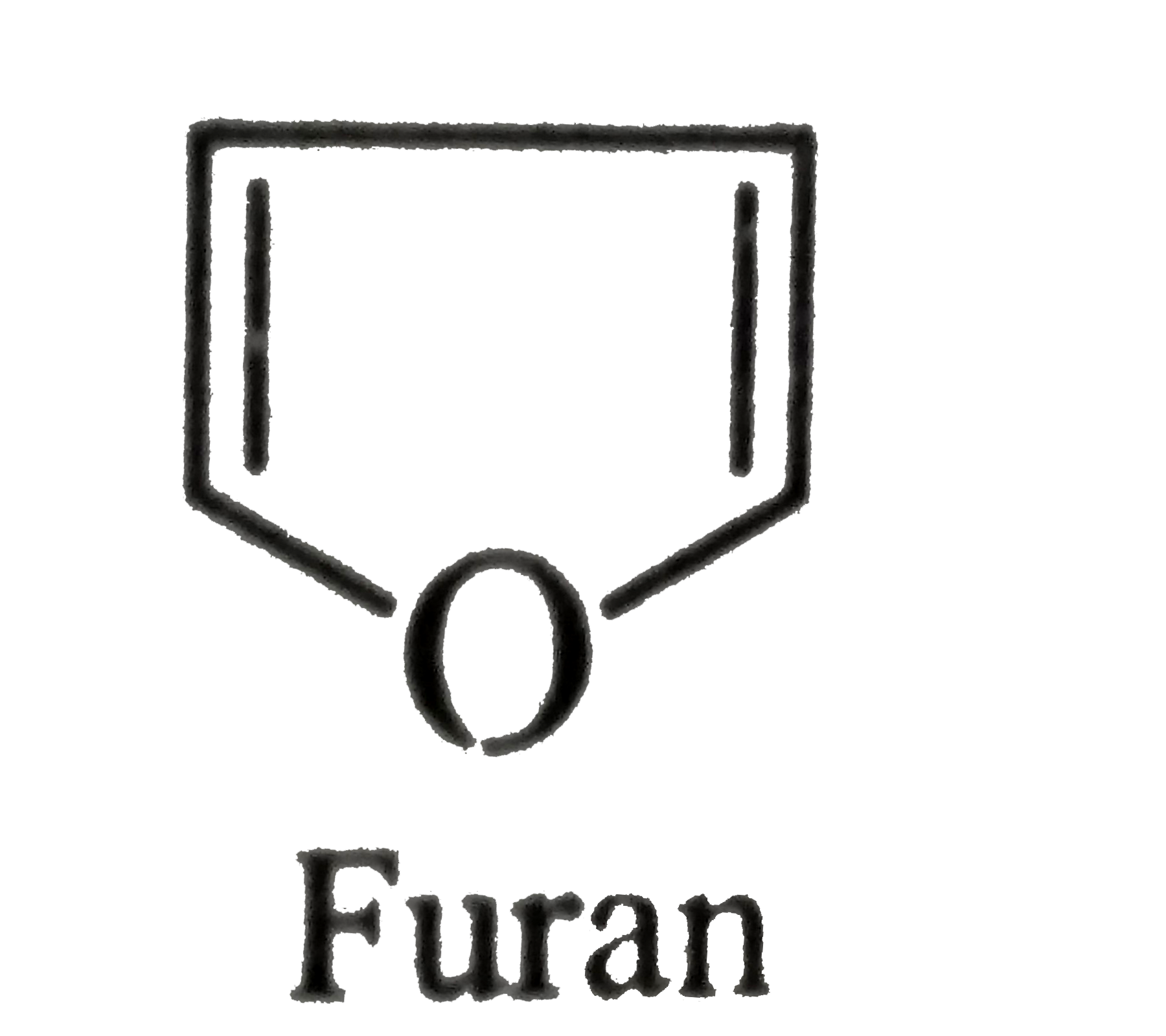
c. Completer the following reaction :
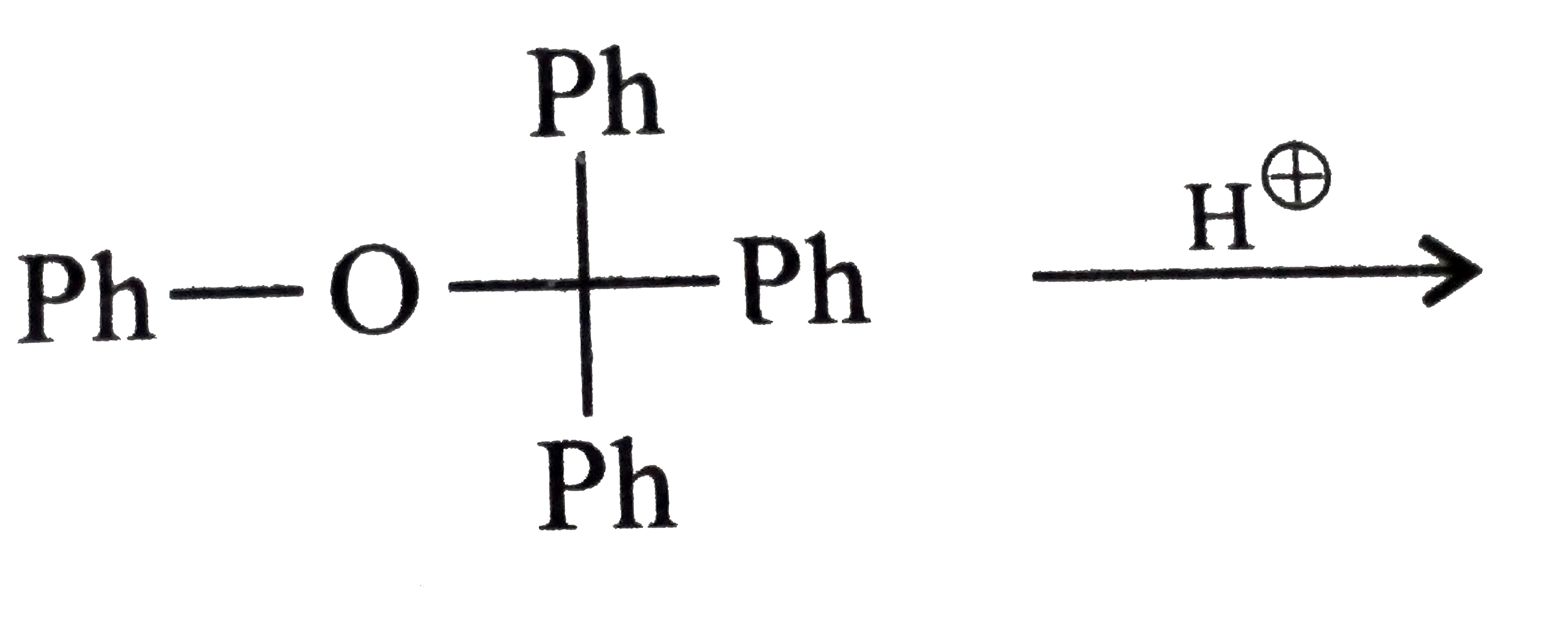
d. (A)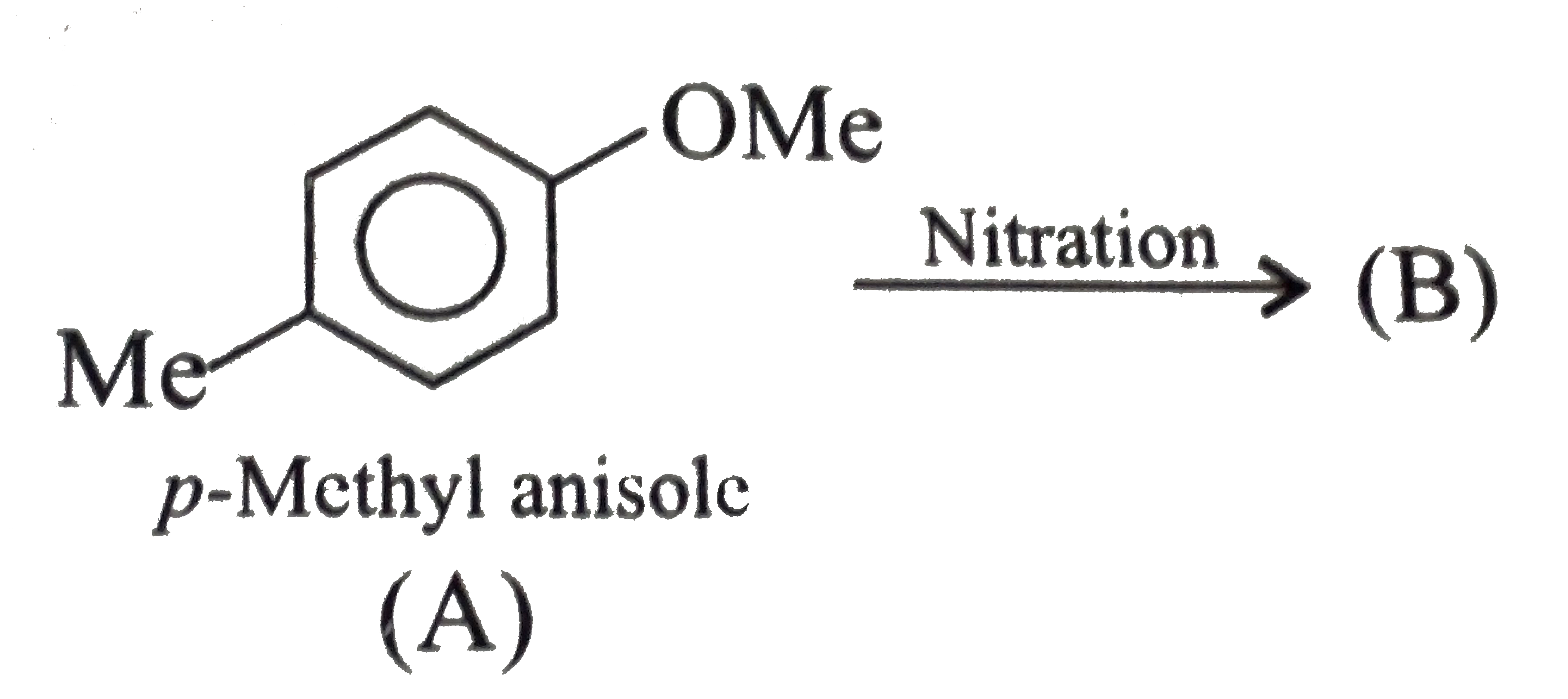 (B) `overset (Nitration) rarr`
(B) `overset (Nitration) rarr`
e.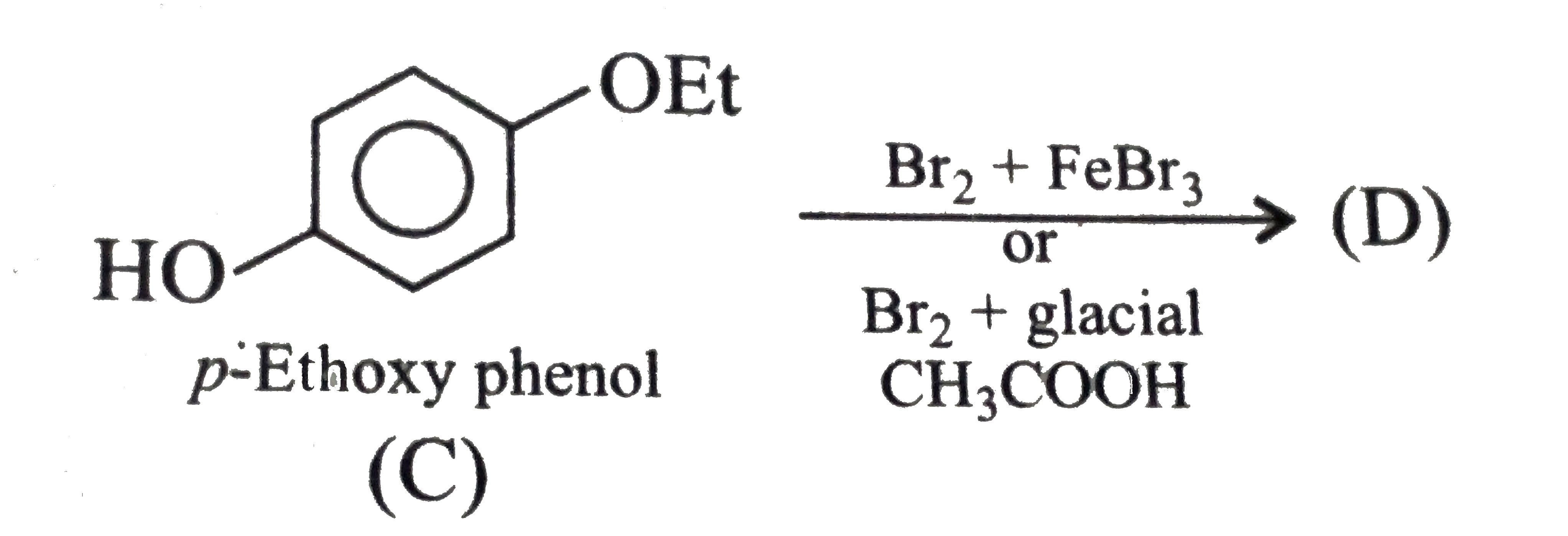
f. How are the ethers distinguished form alcohols ?16:57View Solutiona. Given the major products formed by heating the following ethers with conc. HI with metioning `SN^(-1)` or `SN^(-2)` mechanism.
i. (1- Propoxy propane)
(1- Propoxy propane)
ii. `Ph--O--Me` (Methoxy benzene)
iii. `Ph--CH_(2)--O--Et` (benzyl ethyl ether)
iv. (1-Ethoxy-2-methyl butane)
(1-Ethoxy-2-methyl butane)
v.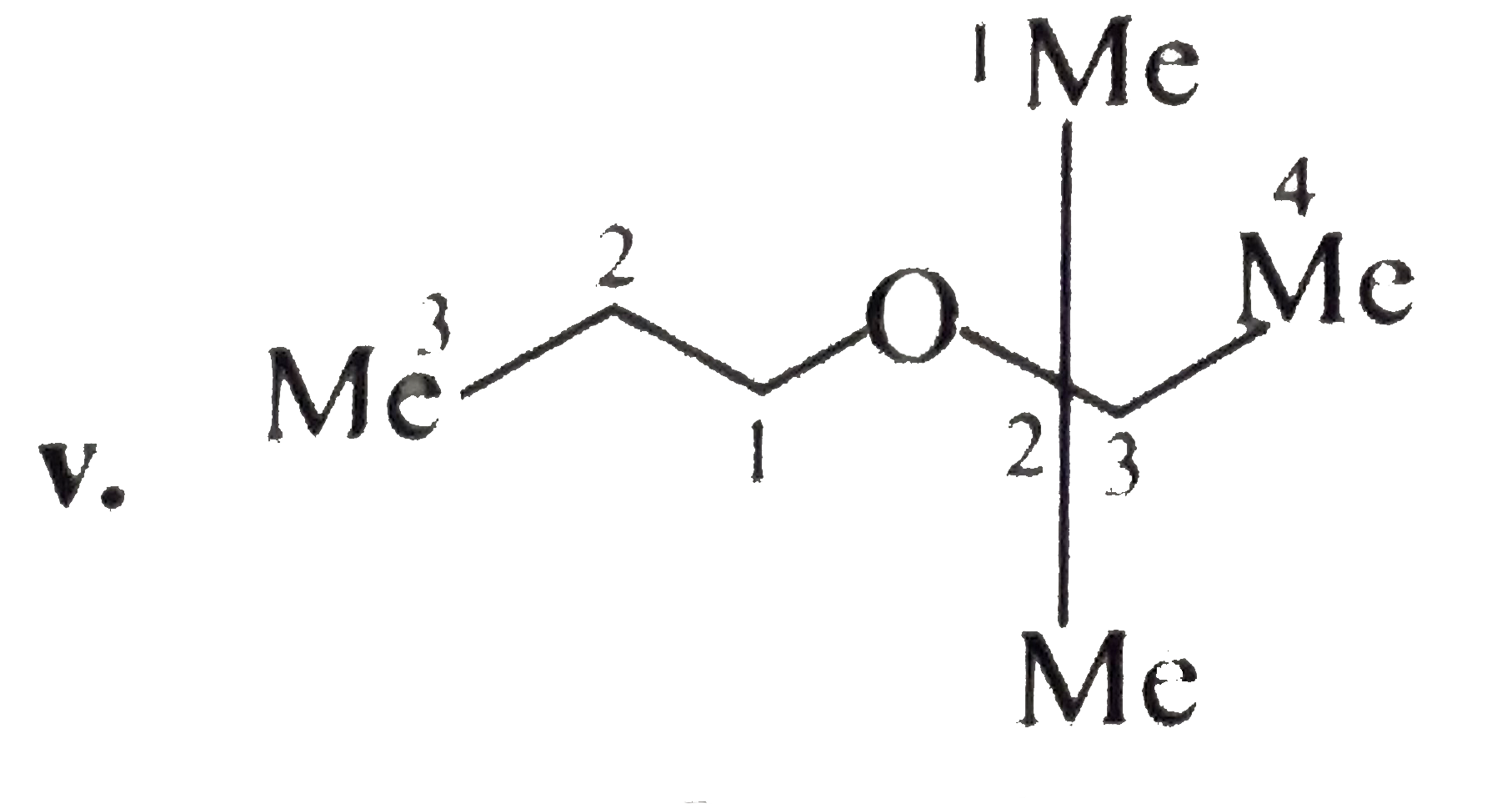 (2-Propoxy-2-methyl butane)
(2-Propoxy-2-methyl butane)
vi. `PhCH_(2)OPh` (Benzyl phenyl ether)
vii.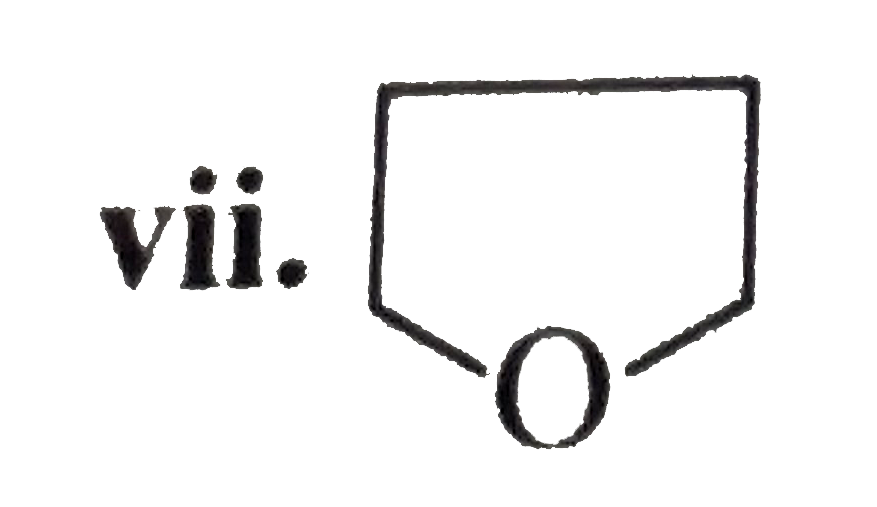 (Tetrahydrofuran, THF)
(Tetrahydrofuran, THF)
b. Given the products of the above ethers with excess of HI.
c. Why does `SN^(-2)` cleavage occur at a faster rate with HI than with HCI ?30:58View SolutionGiven the alcohol and alkene required to prepare the following ethers by alkoxy mercuration-demercuration.
a. Di-se-butyl ether
b. Di-isopropyl ether
c. Di-t-butyl ether
d. 1-Methyl-1-methoxy cyclohexane
e. 1-Phenyl-1-ethoxy propaneView Solutioni. Given the mechanism for the formation of following hydroperoxide..

ii. Give the productus of the following ethers with `O_(2)` in light.
a.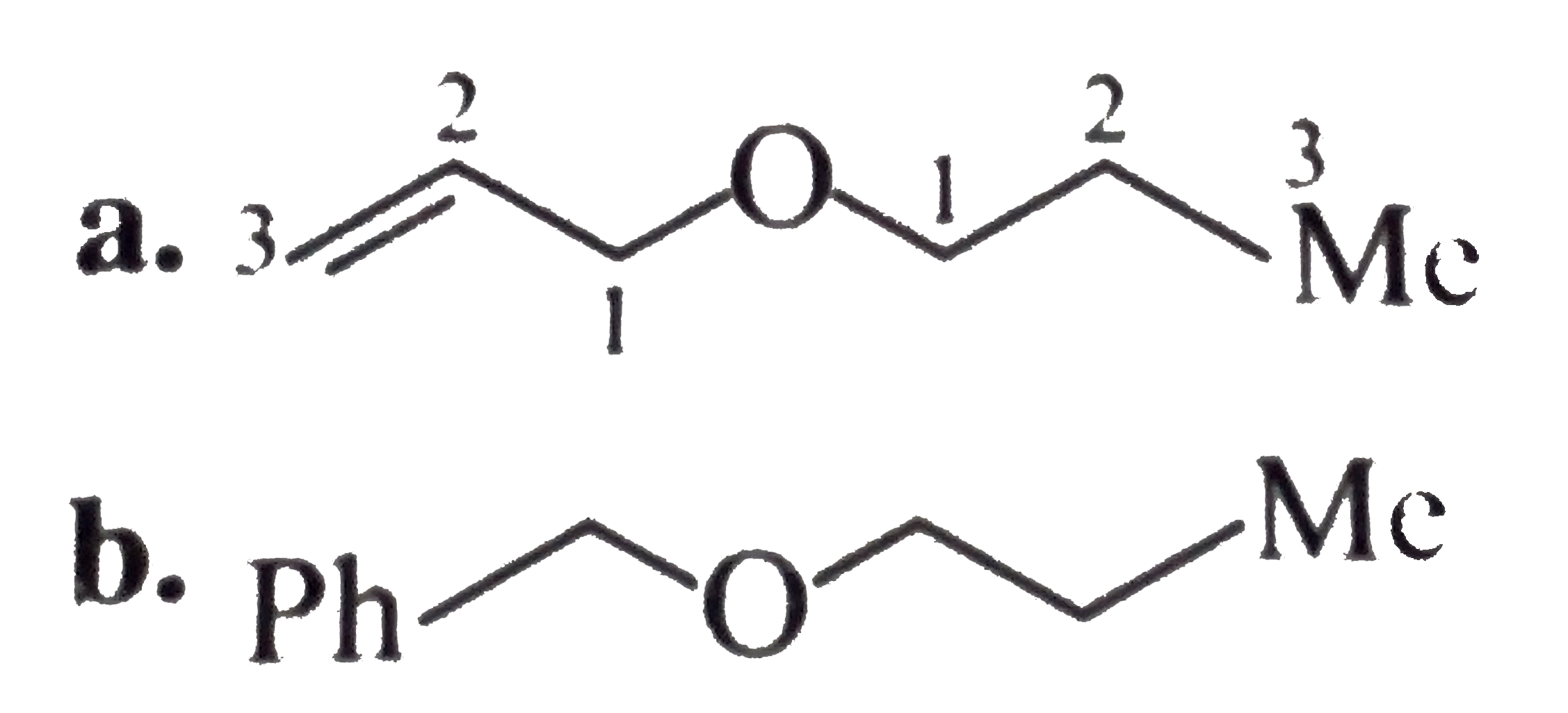 (Allyl-n-propyl ether) (Benzyl-n-propyl ether)04:08View Solution
(Allyl-n-propyl ether) (Benzyl-n-propyl ether)04:08View Solutiona. Given the decreasing order of Lewis basicities of the following:
i. ii. `overset (C_(2)H_(5)--O--C_(2)H_(5) underset (Dirthyl ether)`
ii. `overset (C_(2)H_(5)--O--C_(2)H_(5) underset (Dirthyl ether)`
iii.
b. i. ii.
ii.  iii.
iii. 
c. Completer the following reaction :

d. (A) (B) `overset (Nitration) rarr`
(B) `overset (Nitration) rarr`
e.
f. How are the ethers distinguished form alcohols ?16:57View SolutionGiven the products of the following ethers with:
a. Aqueous HI b. Anlydrous HI + ether c. Excess of aq. HI
(I)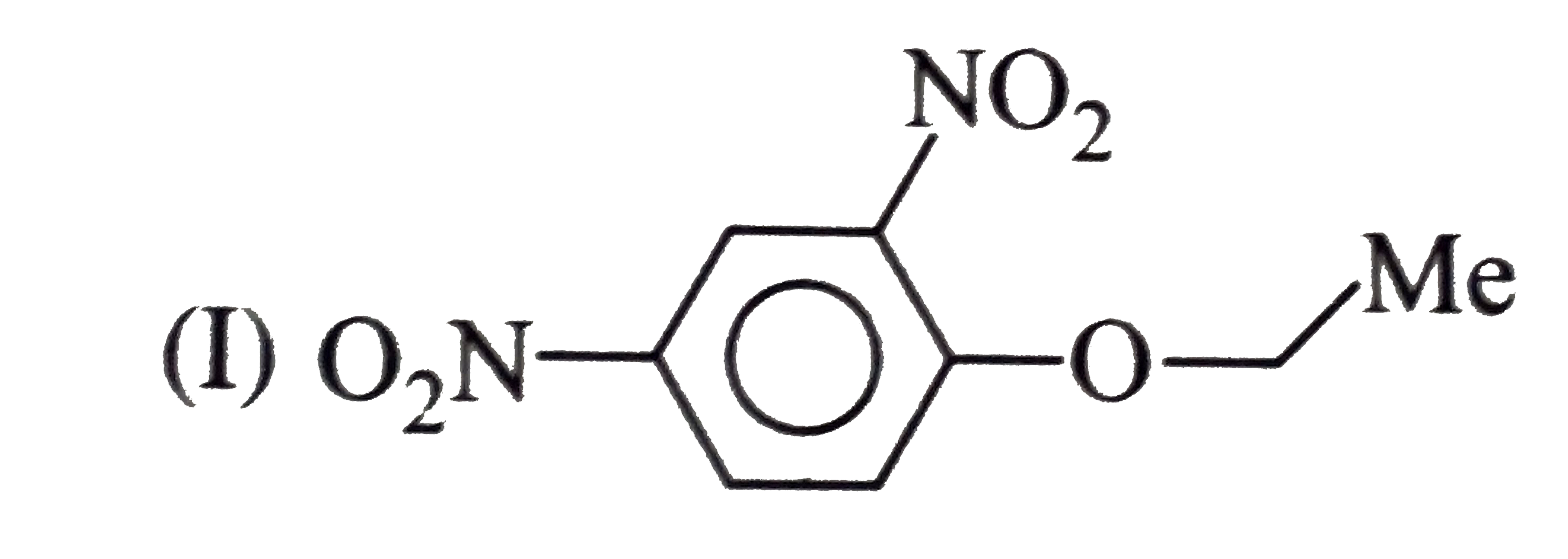 (II)
(II) 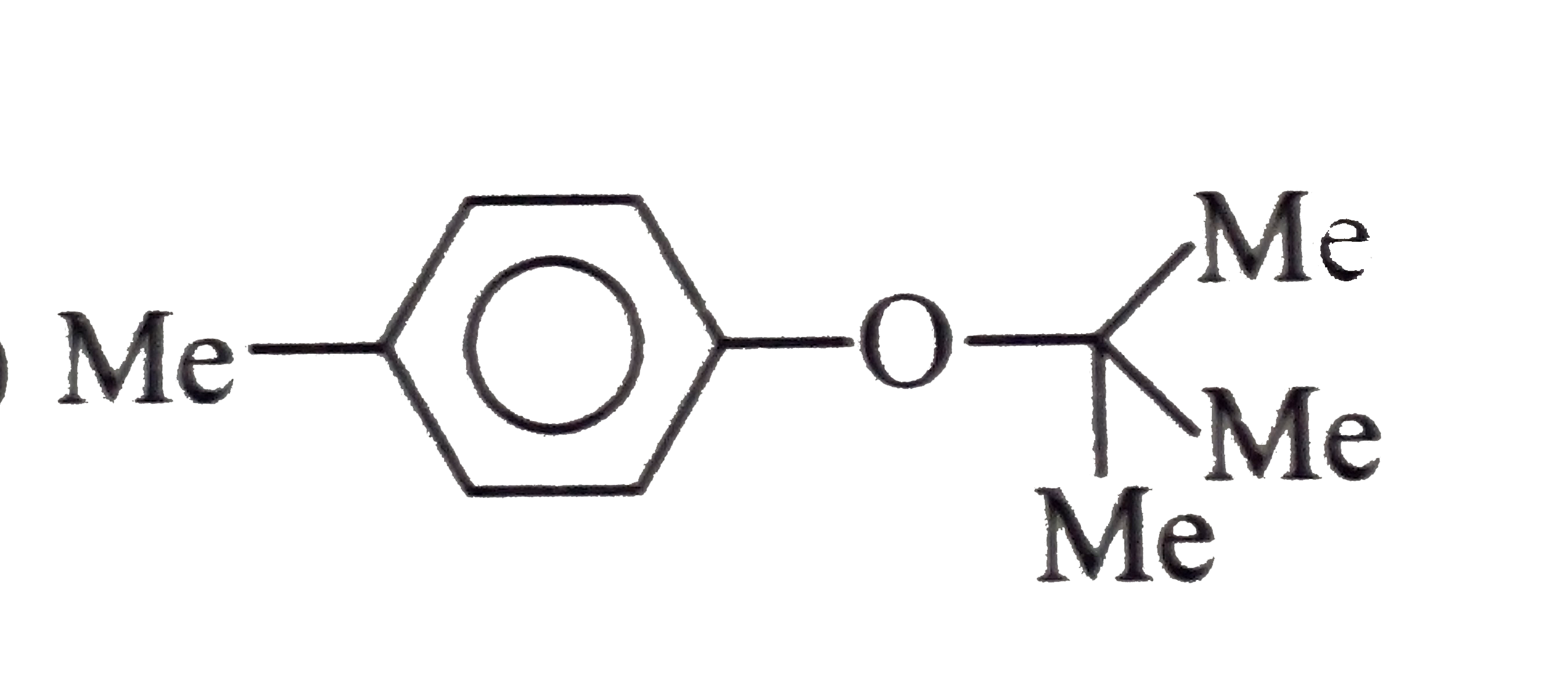
(III)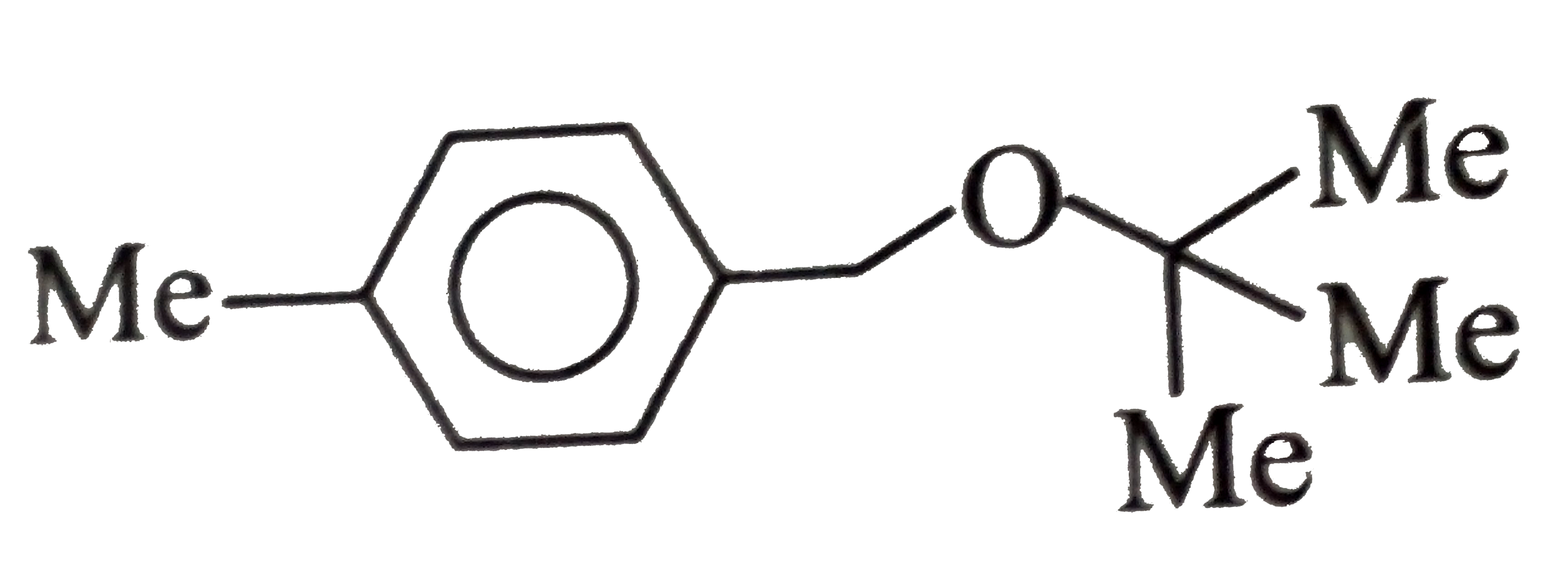 (IV)
(IV) 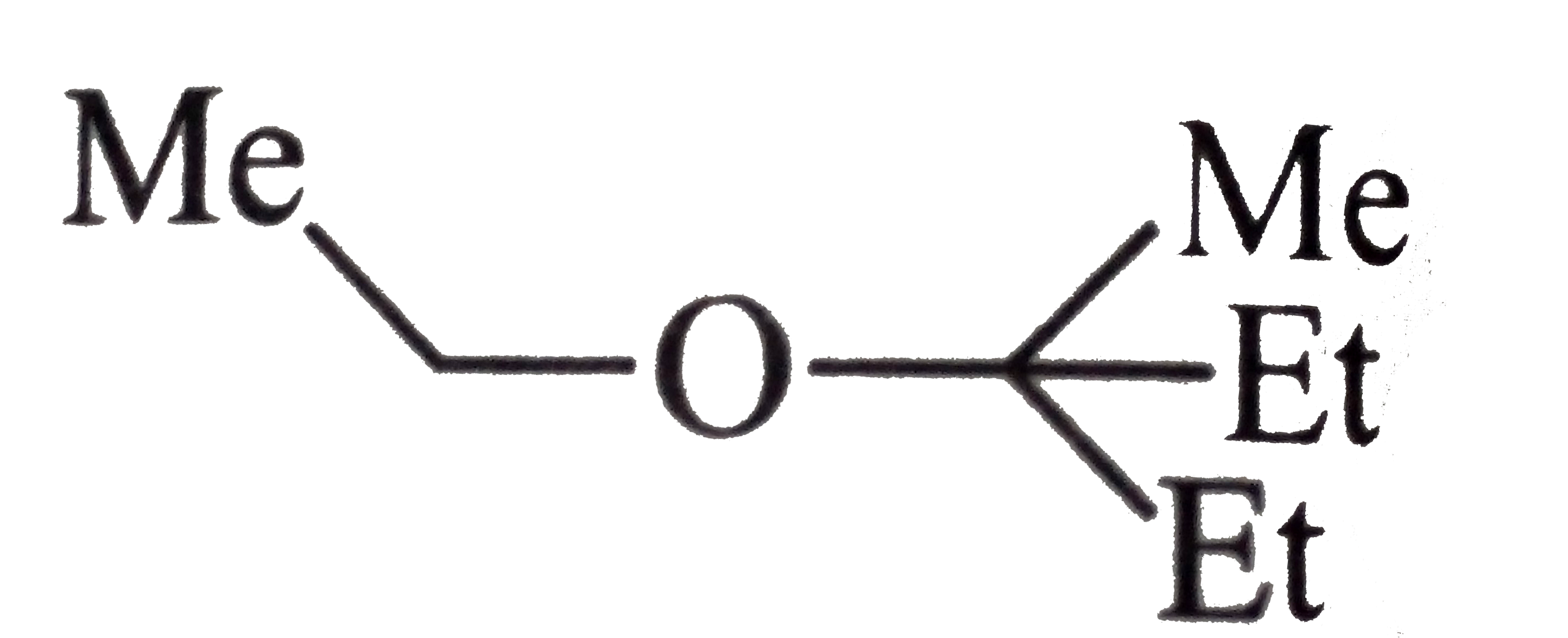 07:31View Solution
07:31View SolutionSelect the correct answer:
a.
i. `PhOC_(2)H_(5)` ii. `Ph---O---Ph`
iii. PhI iv. `C_(2)H_(5)OC_(2)H_(5)`
b.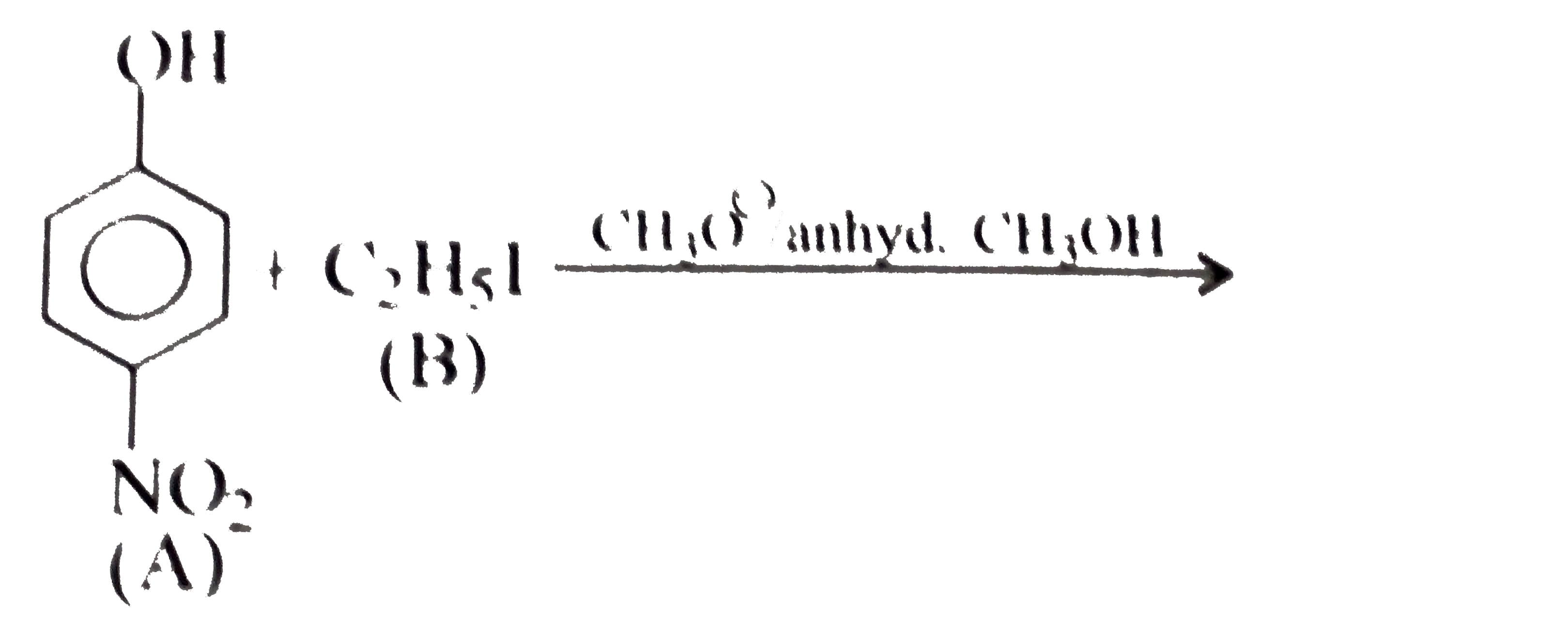
i. `p--NO_(2)--C_(6)H_(4)--OC_(2)H_(5)`
ii. `p--NO_(2)--C_(6)H_(4)--O--C_(6)H_(4)--NO_(2)--p`
iii. `C_(2)H_(5)--O--CH_(3)`
iv. `p--NO_(2)--C_(6)H_(5)--I`.
c.
i. `C_(6)H_(5) CH_(2)--O--Ph`
ii. `C_(6)H_(5) CH_(2)--O--C_(2)H_(5)`
iii. `Ph--O--C_(2)H_(5)`
iv. `C_(2)H_(5)--O--C_(2)H_(5)`
d.
i. `C_(6)H_(5)CH_(2)--O--C_(2)H_(5)`
ii. `C_(6)H_(5)--CH_(2)--O--Ph`
iii. `Ph--O--C_(2)H_(5)`
iv. `C_(2)H_(5)--O--C_(2)H_(5)` .
e.
i.
ii.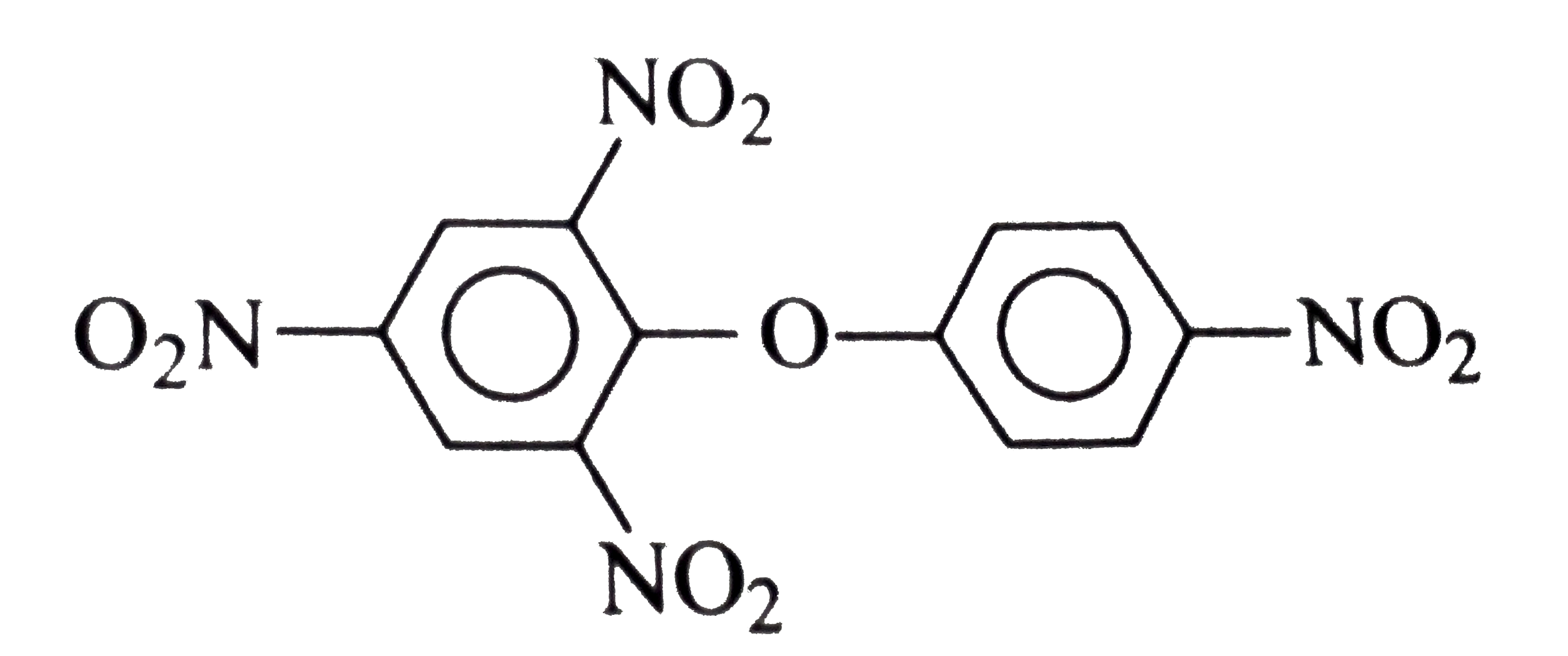
iii.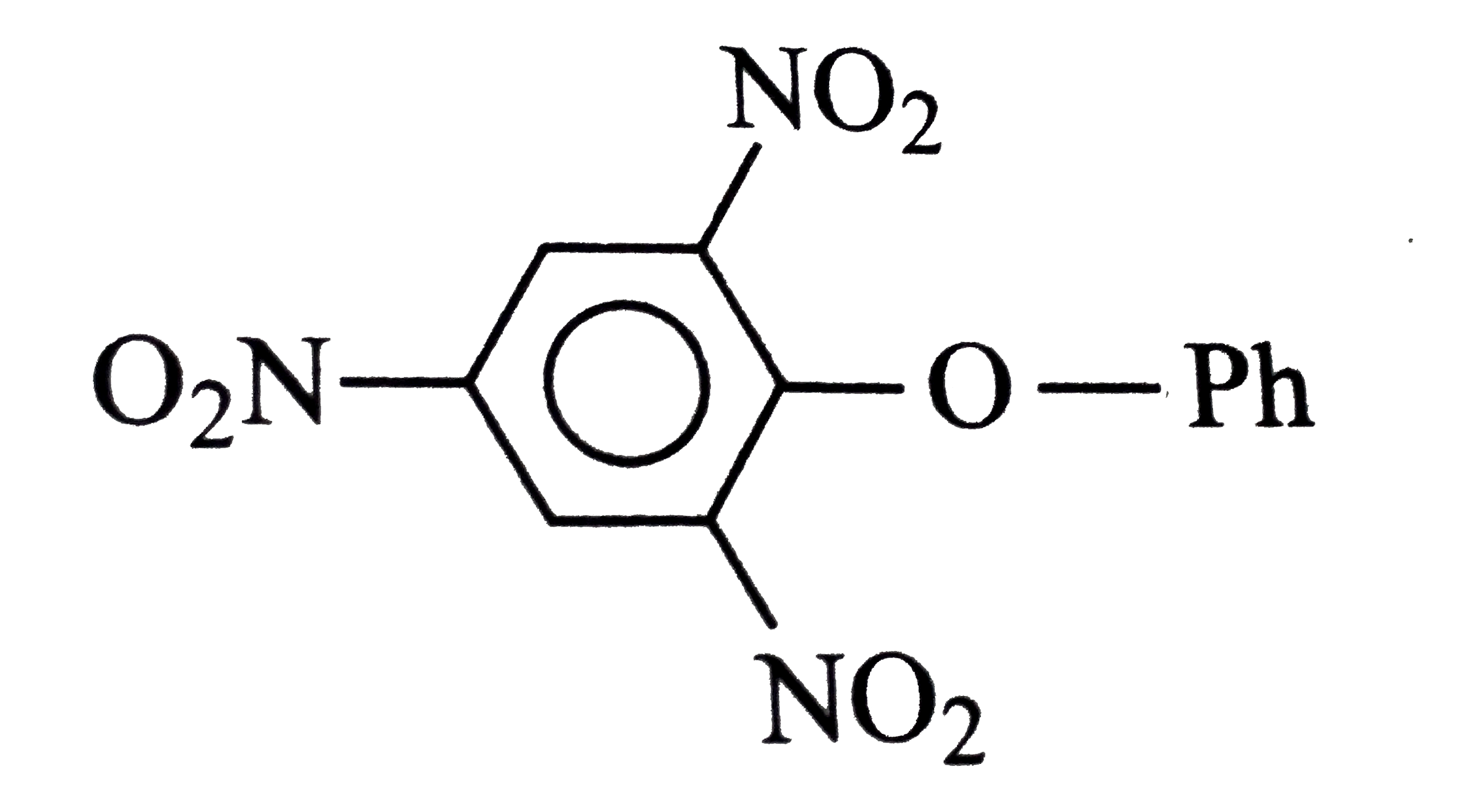
iv.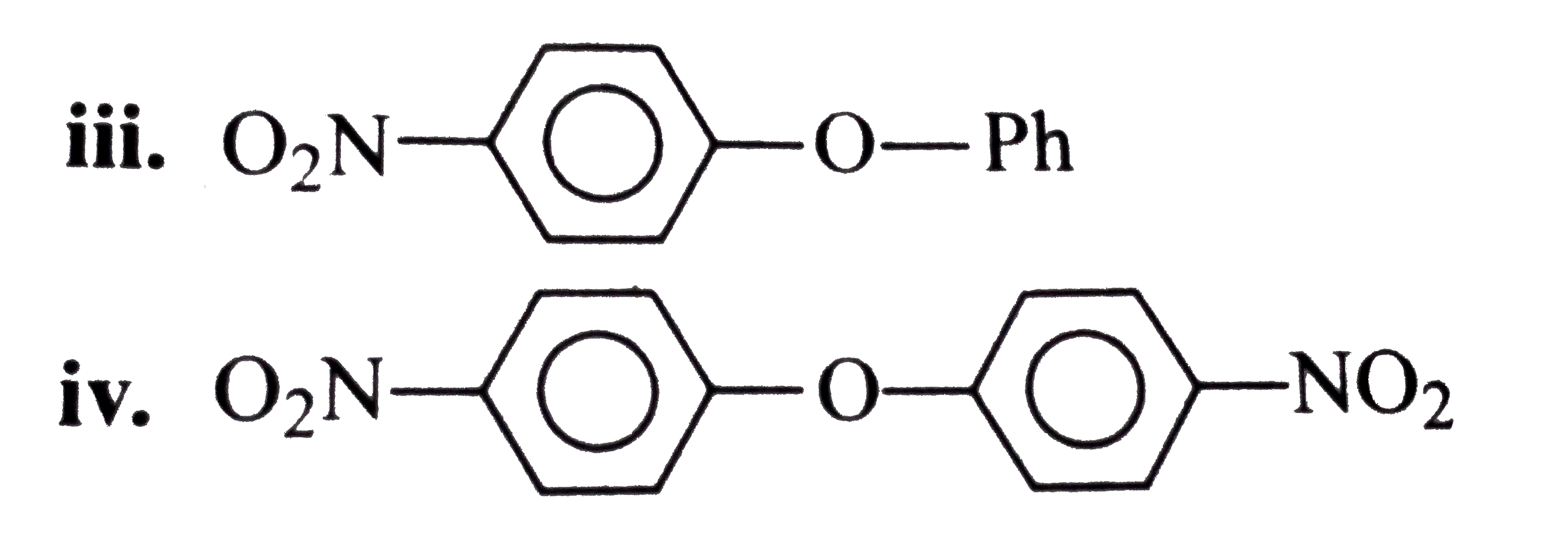
f.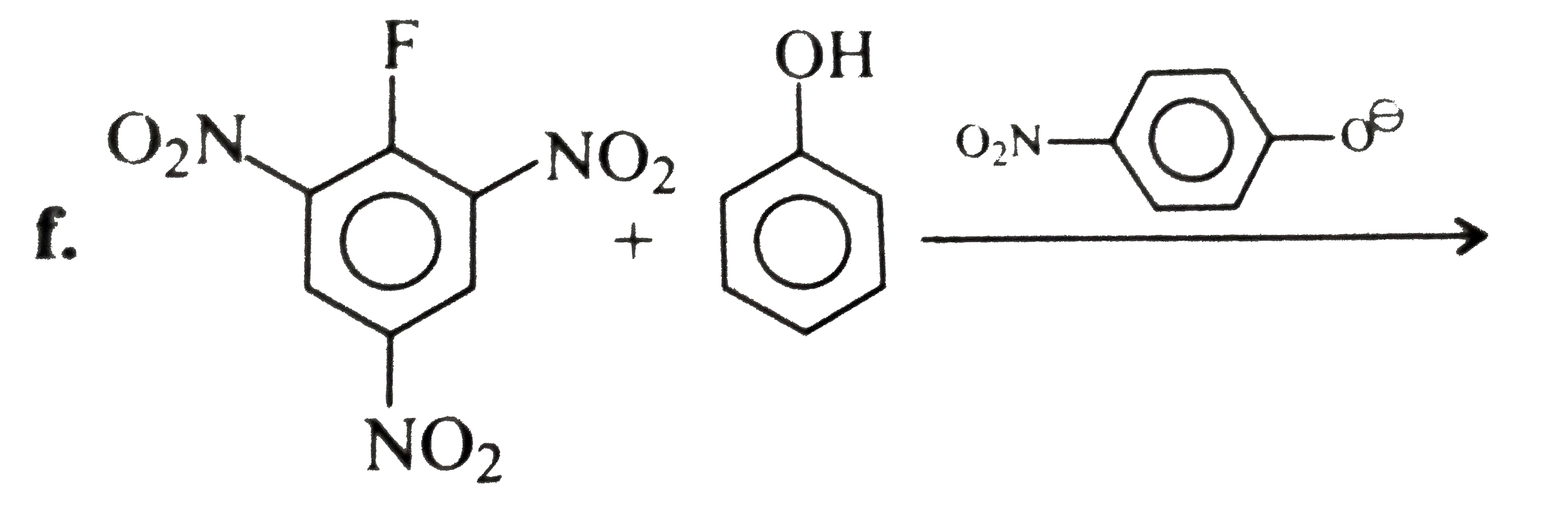
i.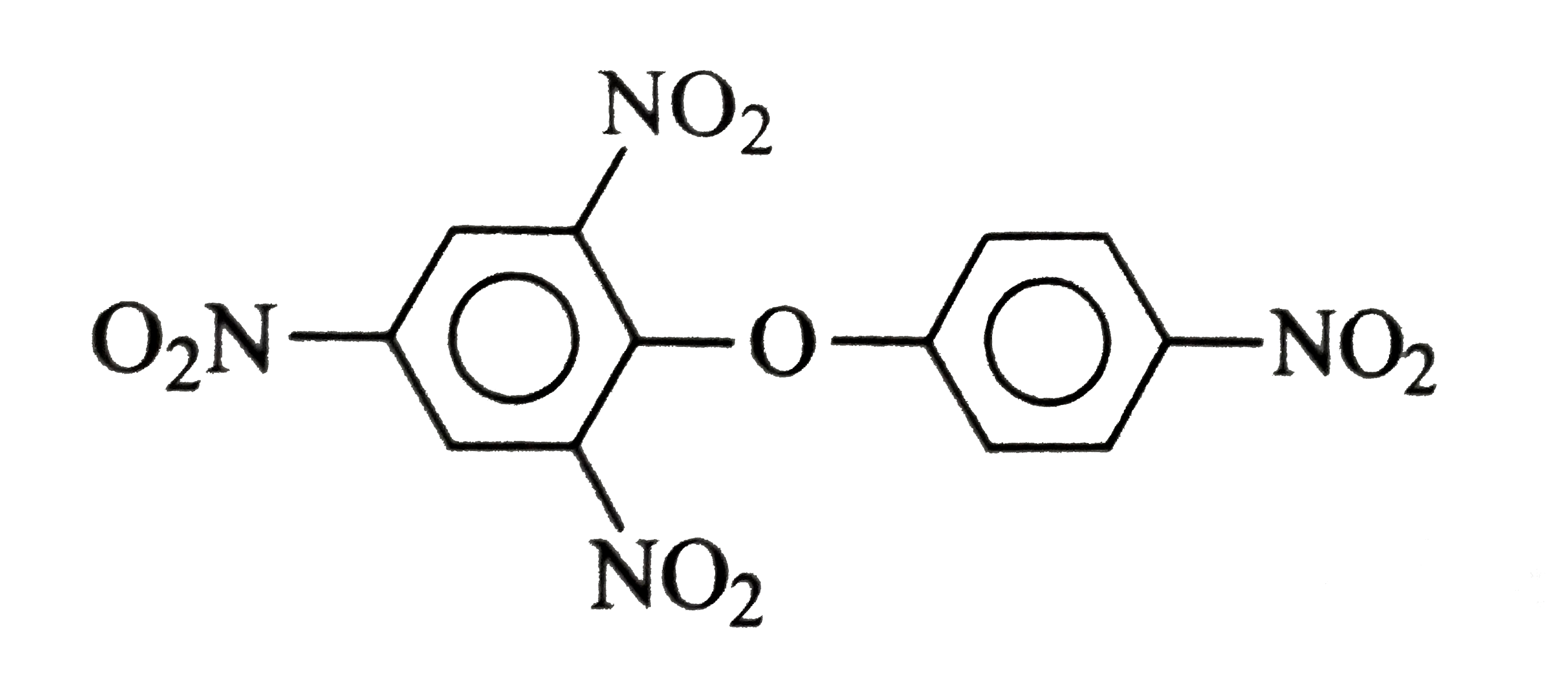
ii.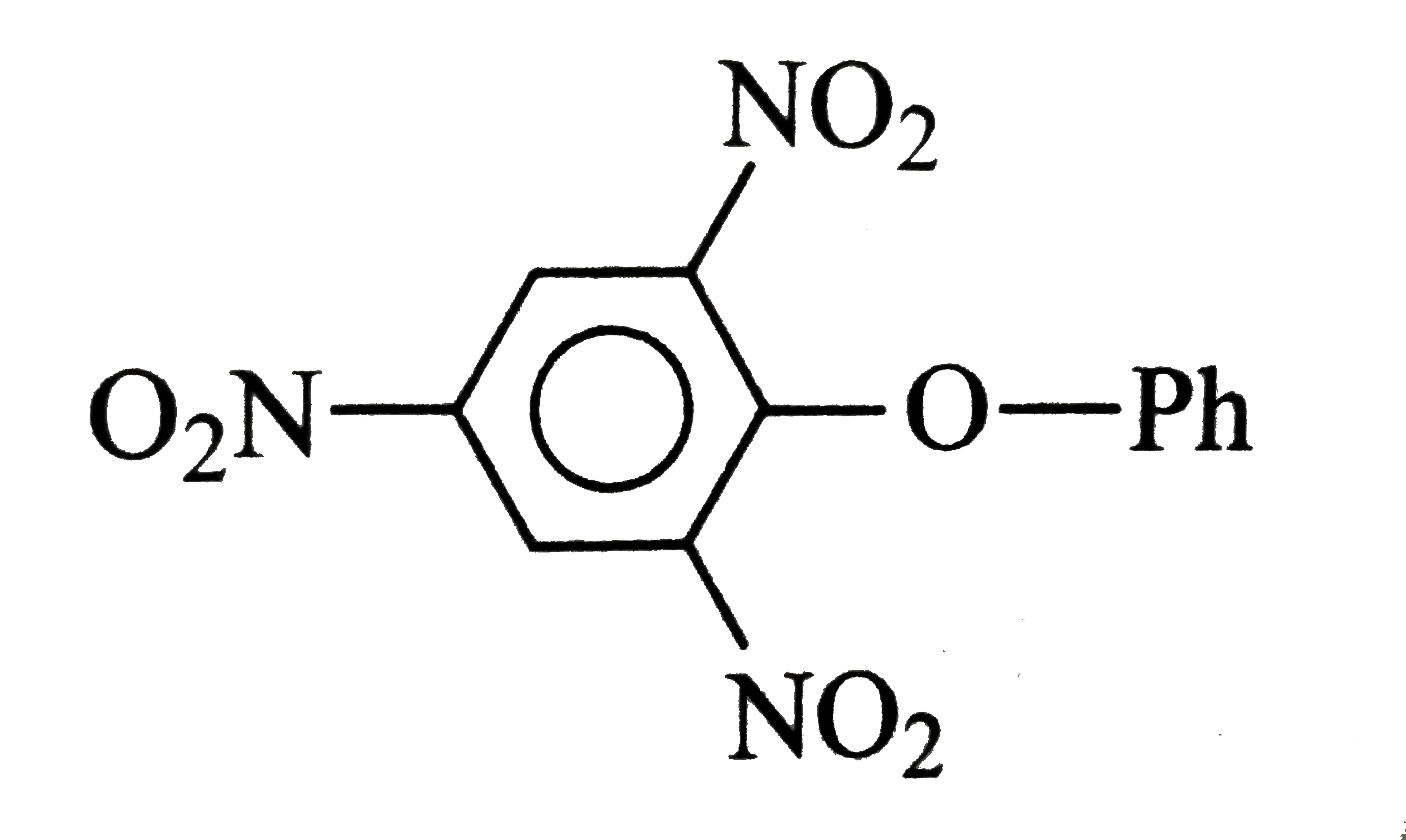
iii.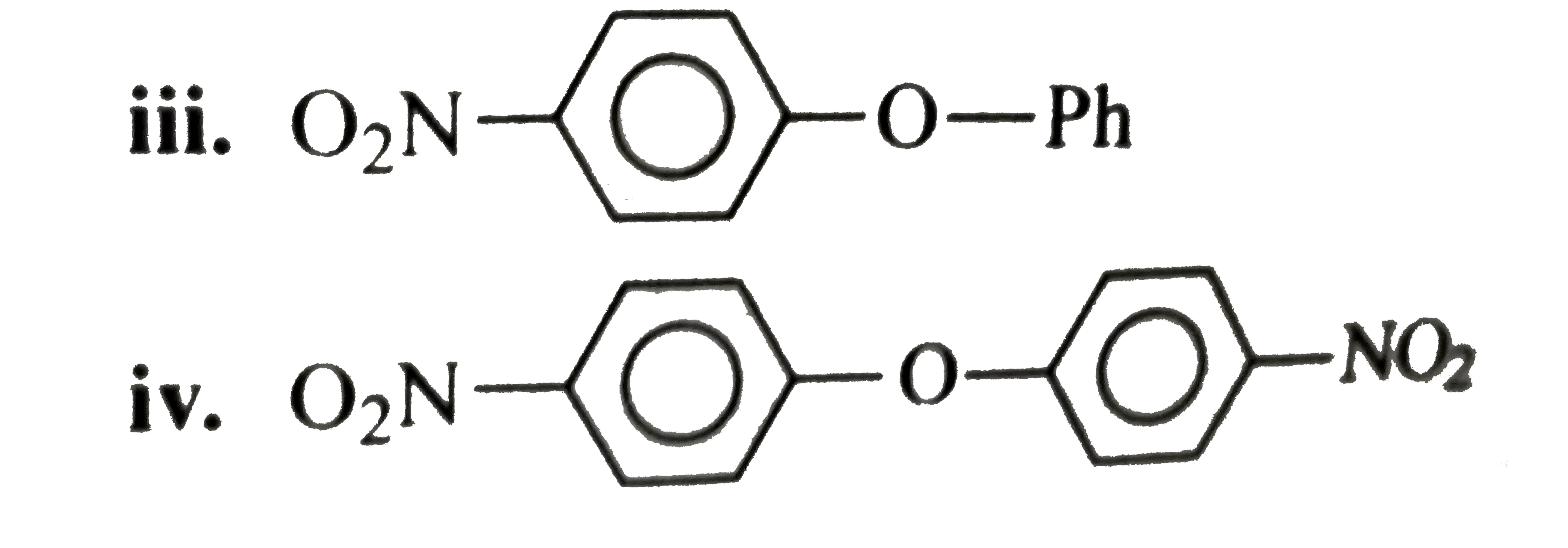 06:50View Solution
06:50View SolutionThere are two paths for the preparation of phyebnyl-2, 4-dinitro phenyl ether (C). Which path is feasible and why ?
Path I :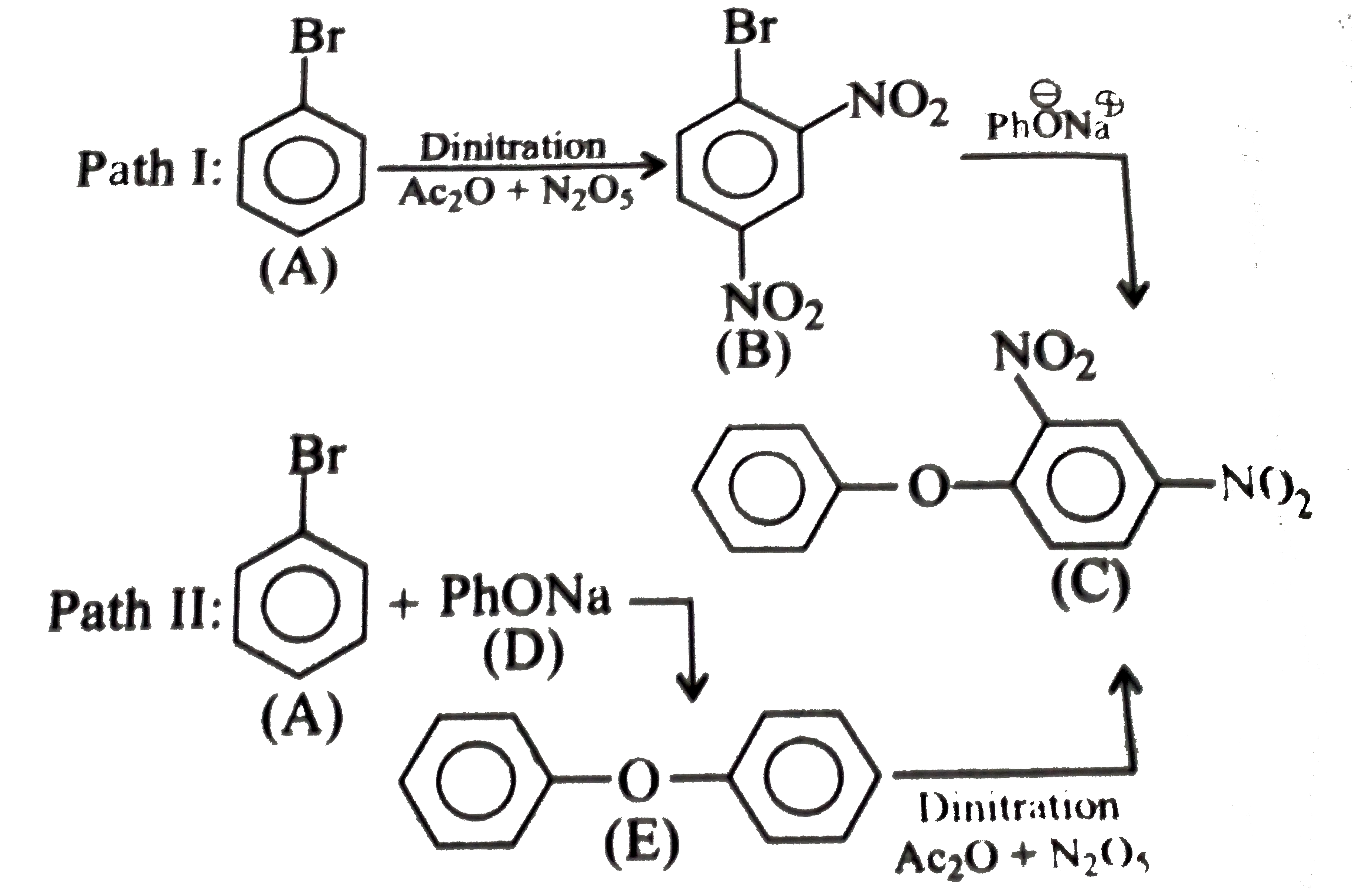 04:22View Solution
04:22View SolutionConvert benzene to the following compounds:
a.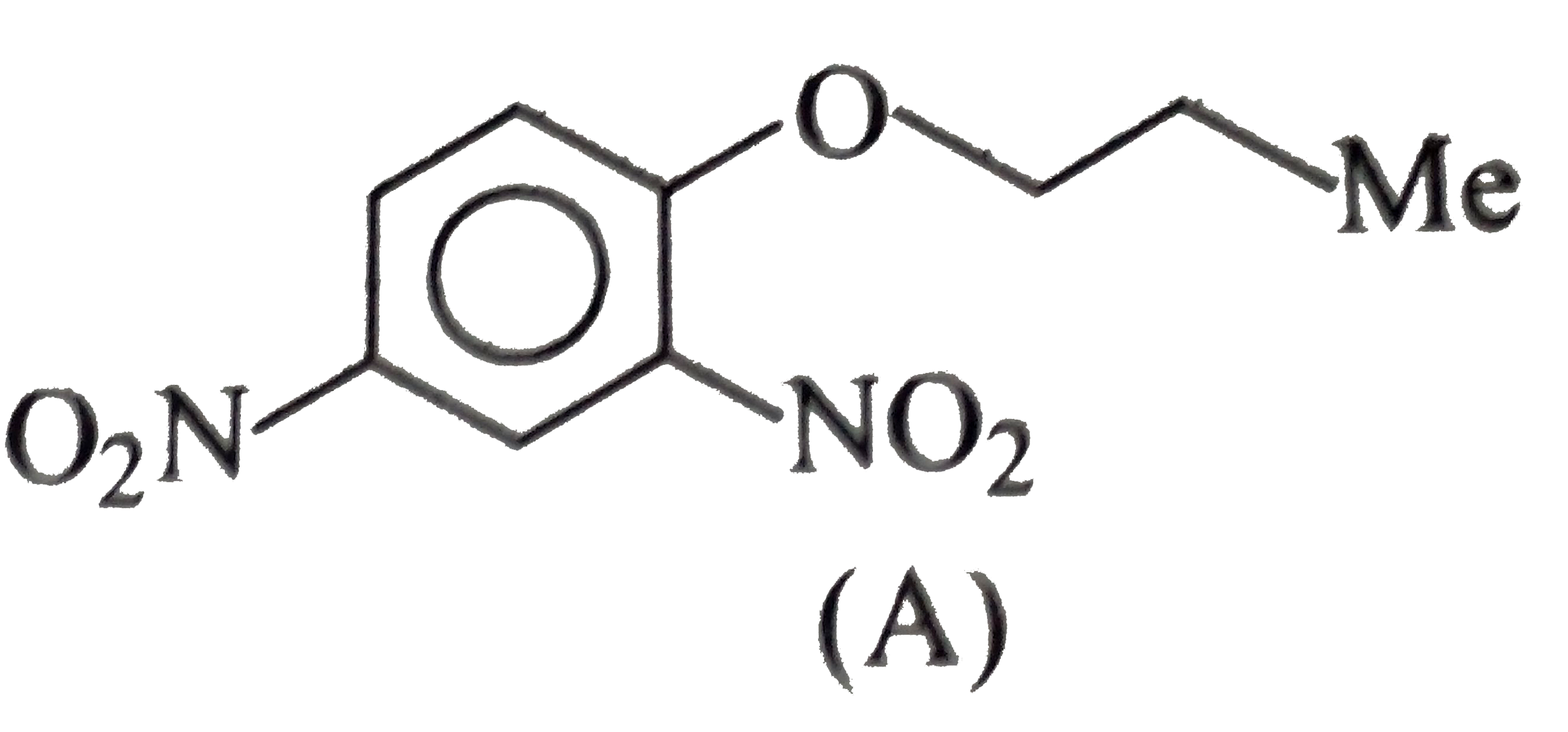 b.
b. 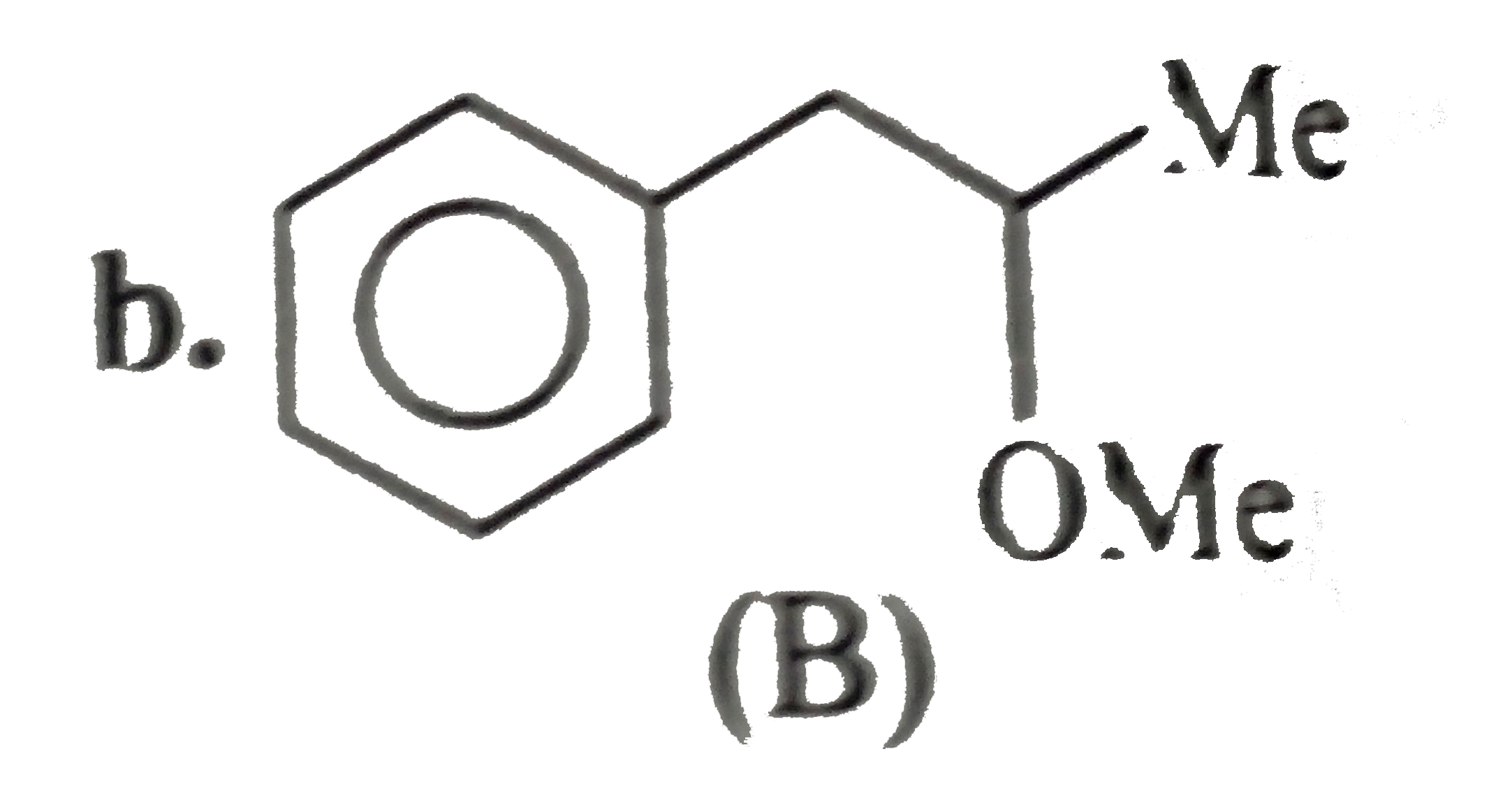
c.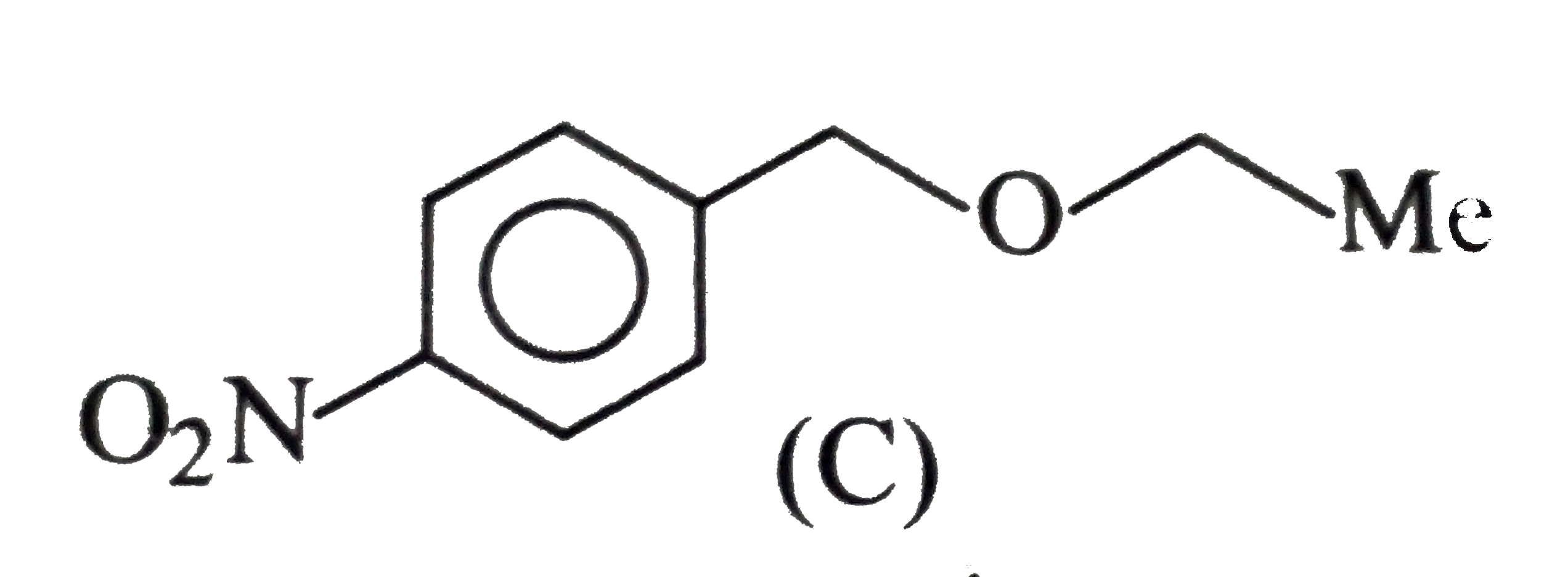 d.
d. 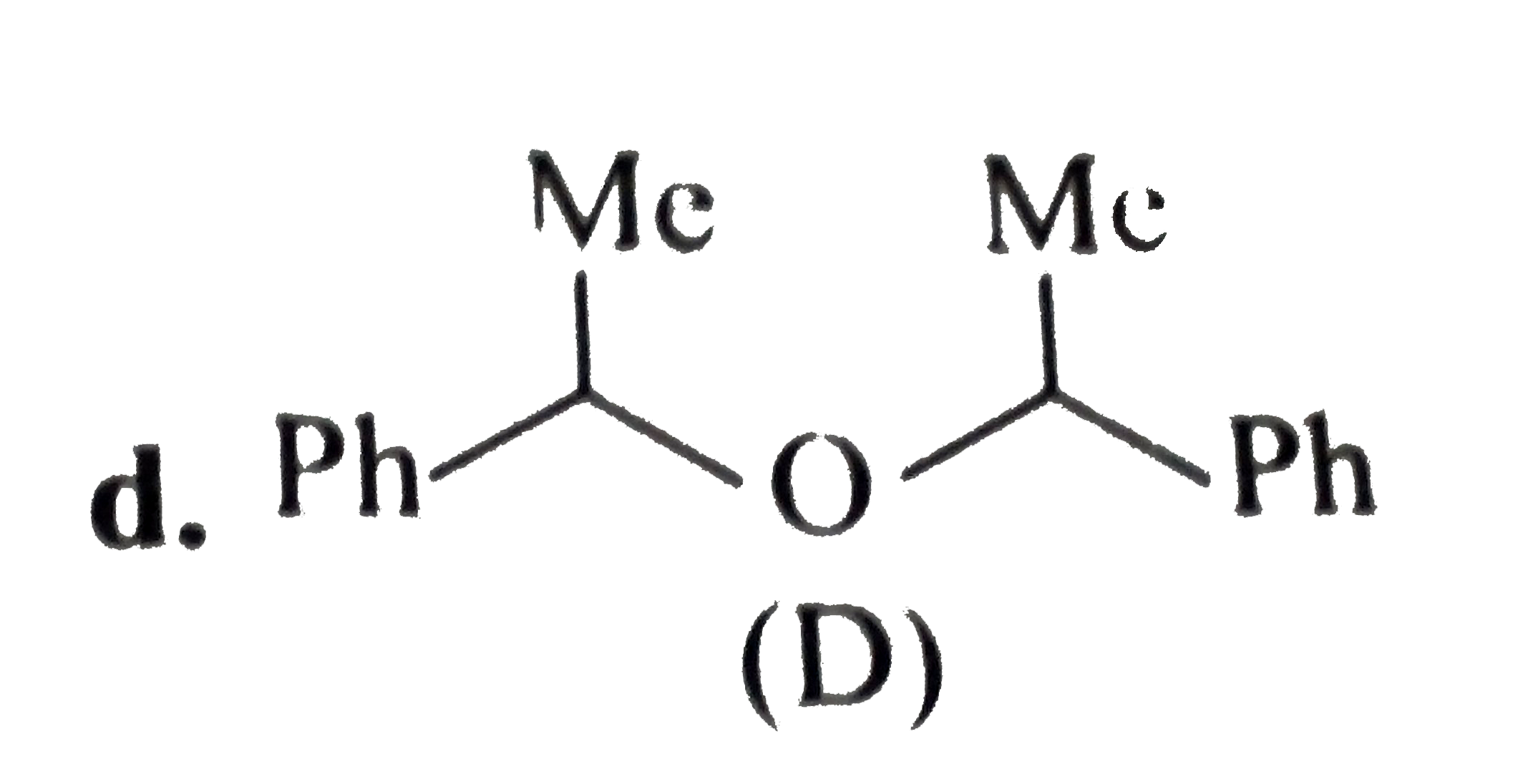 10:45View Solution
10:45View SolutionComplete the following reactions:
(I) a.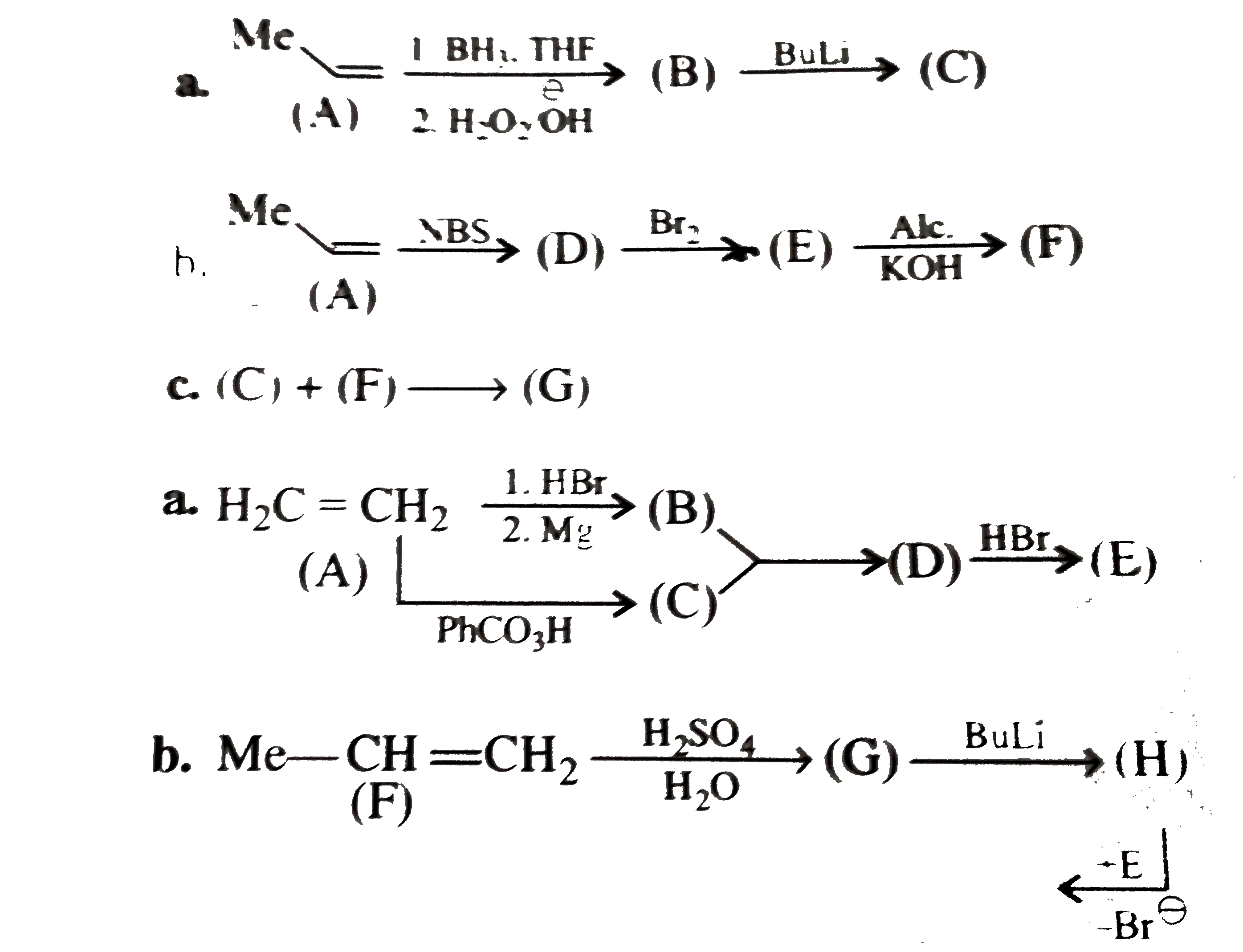 08:19View Solution
08:19View SolutionWhich is the best method for the protection of (OH) group during the following synthesis ? Explain.
a.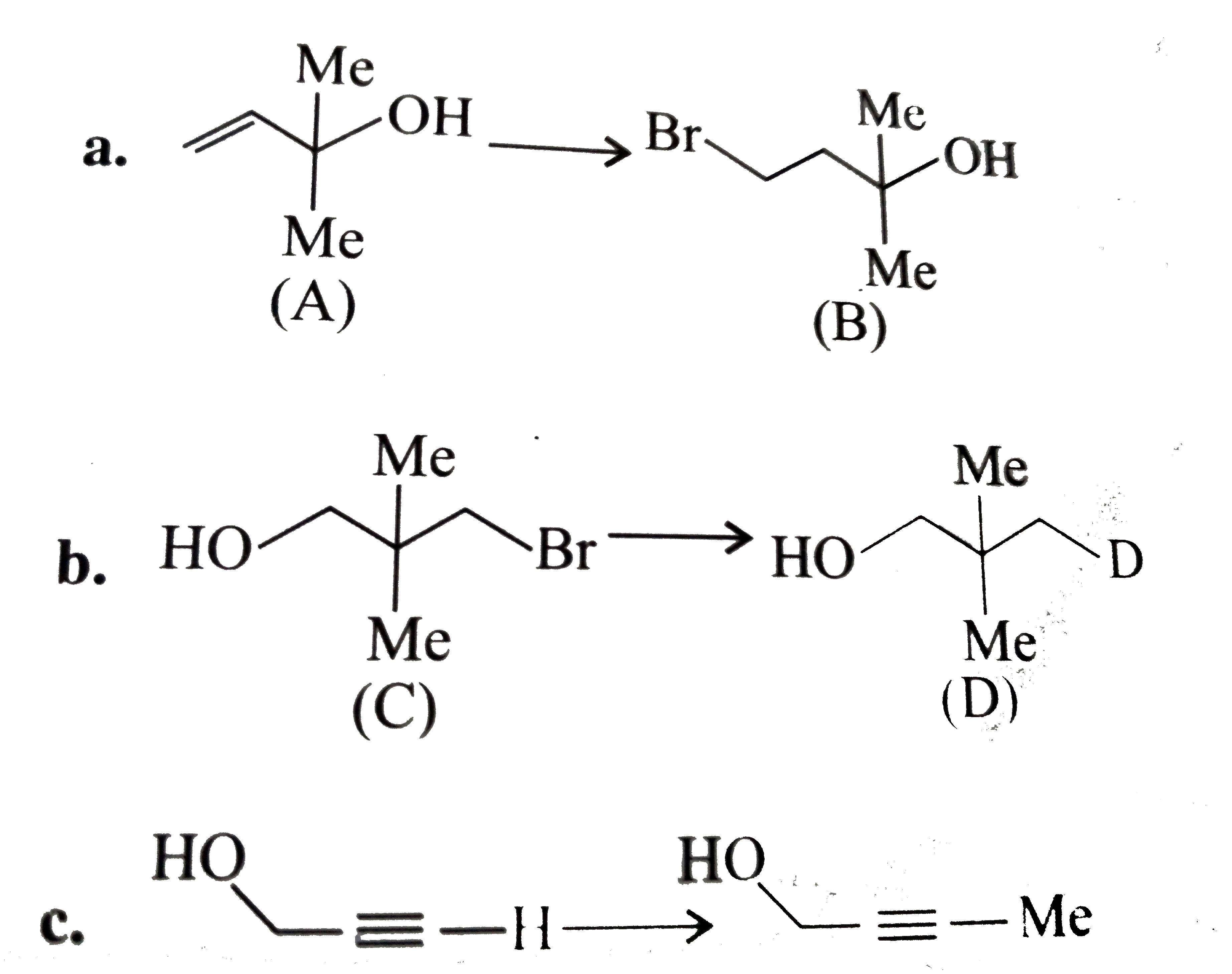 View Solution
View SolutionComplete the following:
a.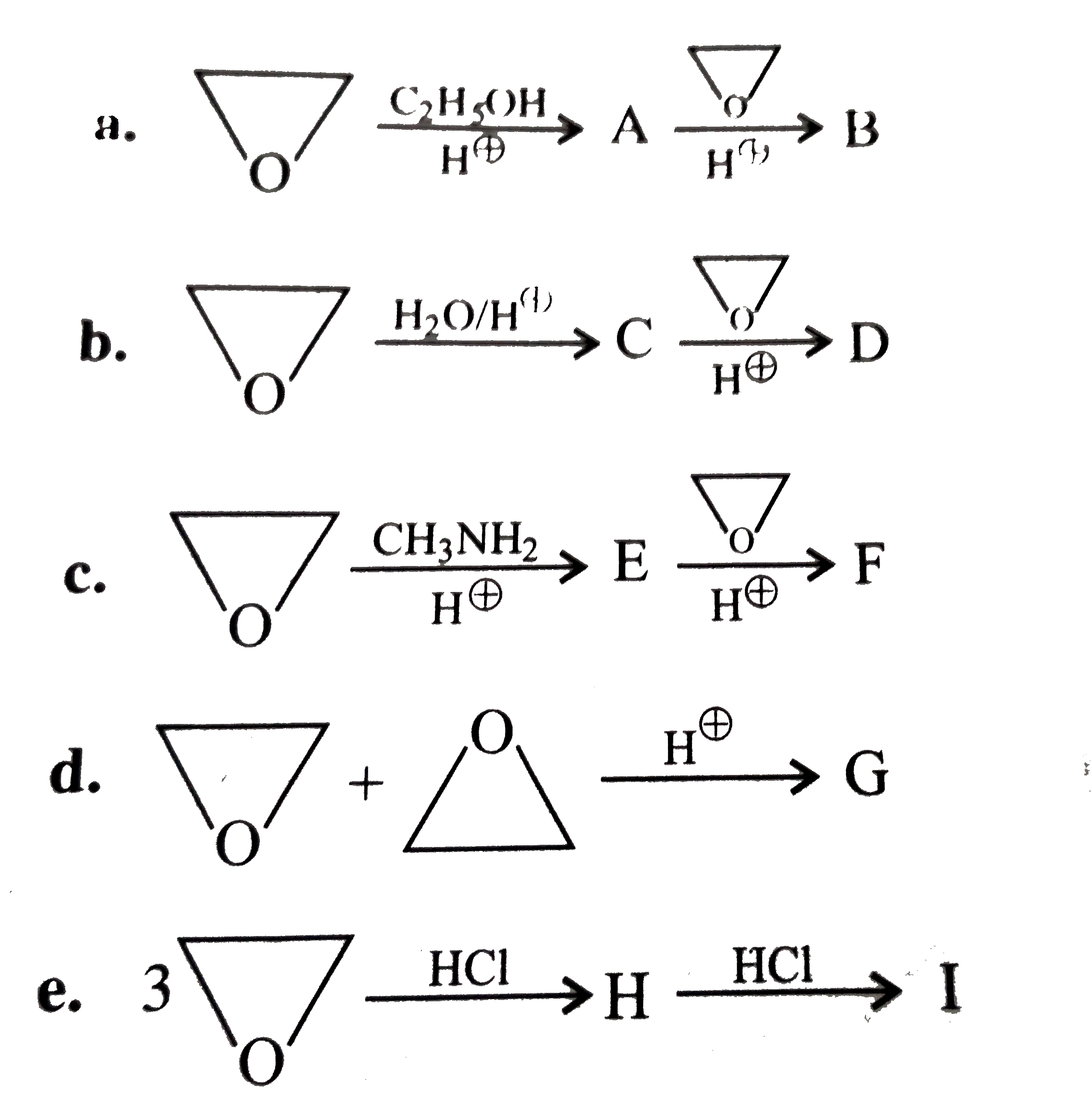
b.
c.
d.
e.
f. (H) + (I) `overset (Aq. KOH) rarr` J
g.
h. `PhH + C_(2)H_(5)CI` `overset (AICI_(3)) rarr` A `overset (NBS) rarr` B
`overset (AIc. KOH) rarr` C `overset (ArCO_(3)H) rarr` D `overset (1. PhMgBr) underset (2. H_(3)O^(+)) rarr` EView SolutionSynthesise the following compounds :
a.
b. Benzene `rarr` 2,4-D (2,4-Dichlorophenoxy acetic acid, broad leaf week killer)
c. Nitrobenzene `rarr` PAS (p-Amini salicylic acid, Aniti-tuberculosis drug)
d.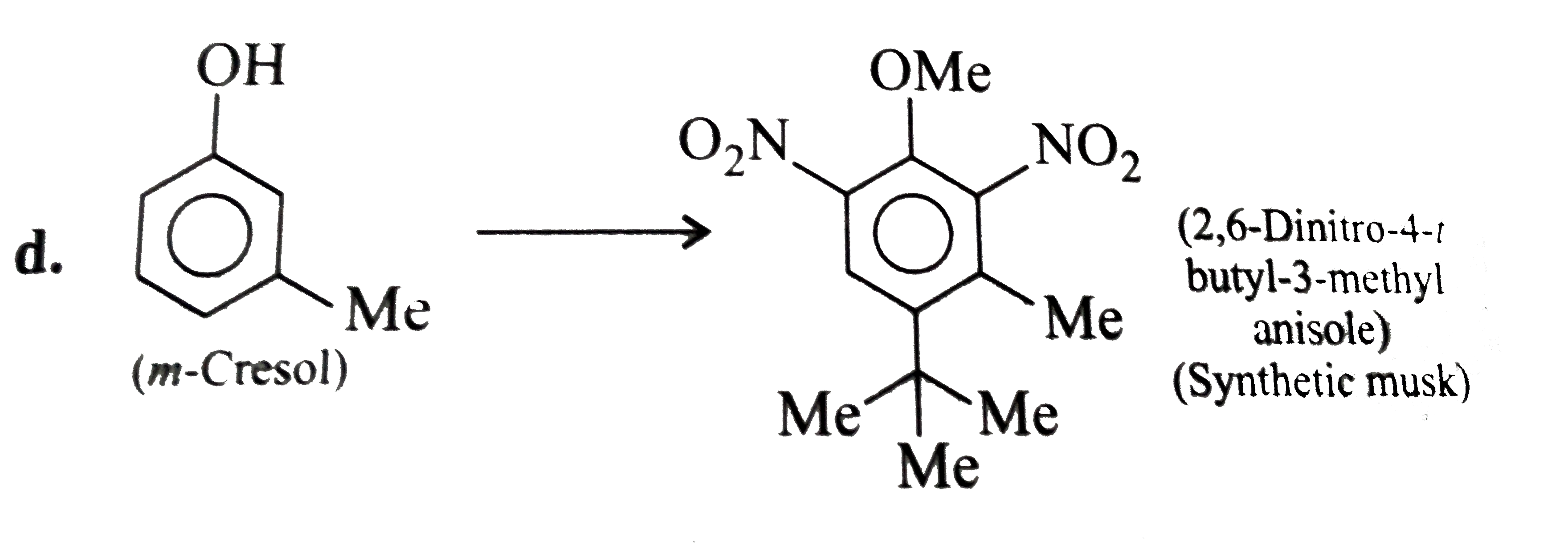
e. Chlorobenzene `rarr`
f. Phenol `rarr` `overset (Methyl salicylate) underset (Oil of wintergreen, a flavouring agent)
g.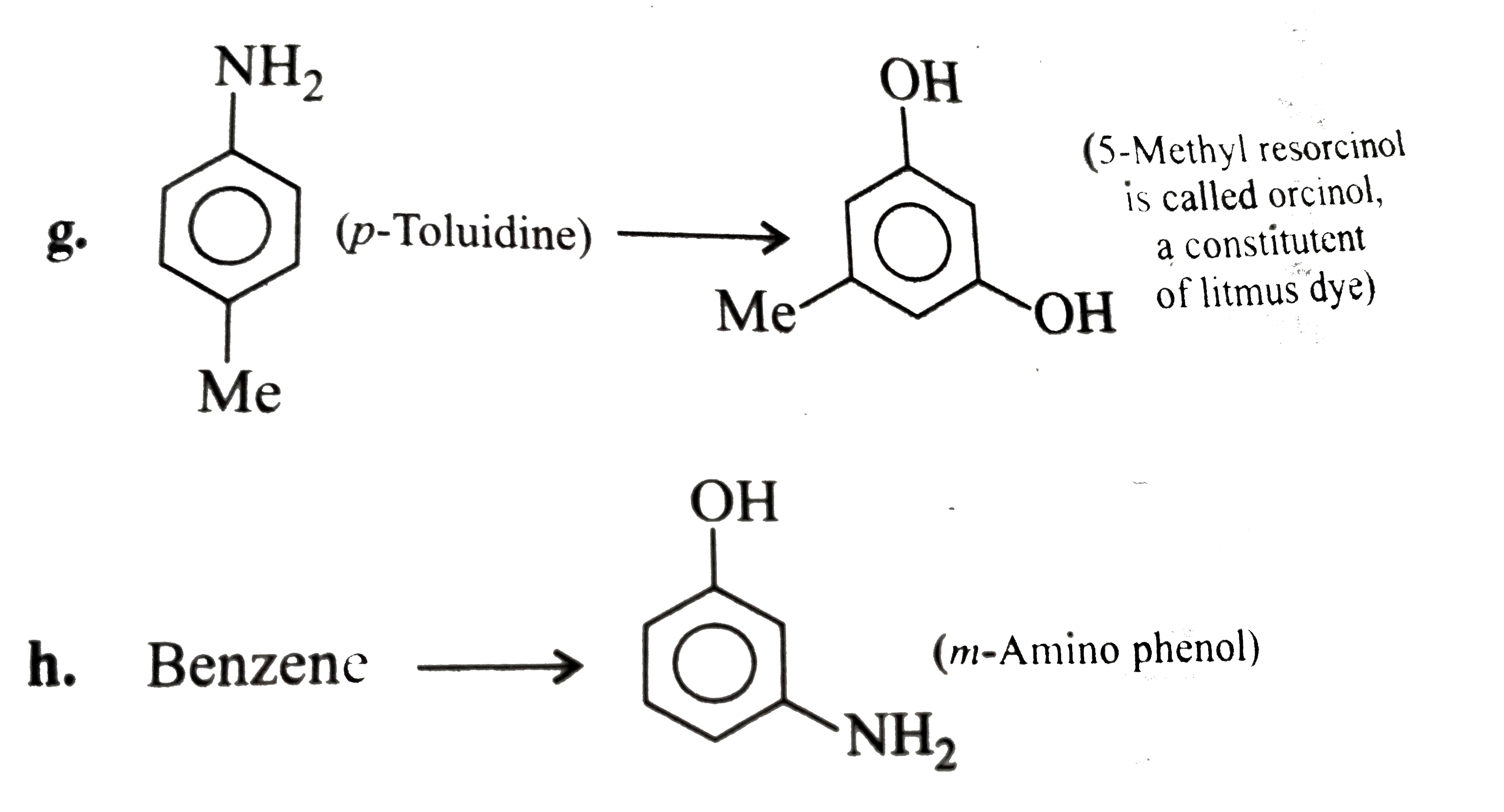
h. Benezene `rarr`View SolutionComplete the following reaction:
 View Solution
View SolutionComplete the following reaction:
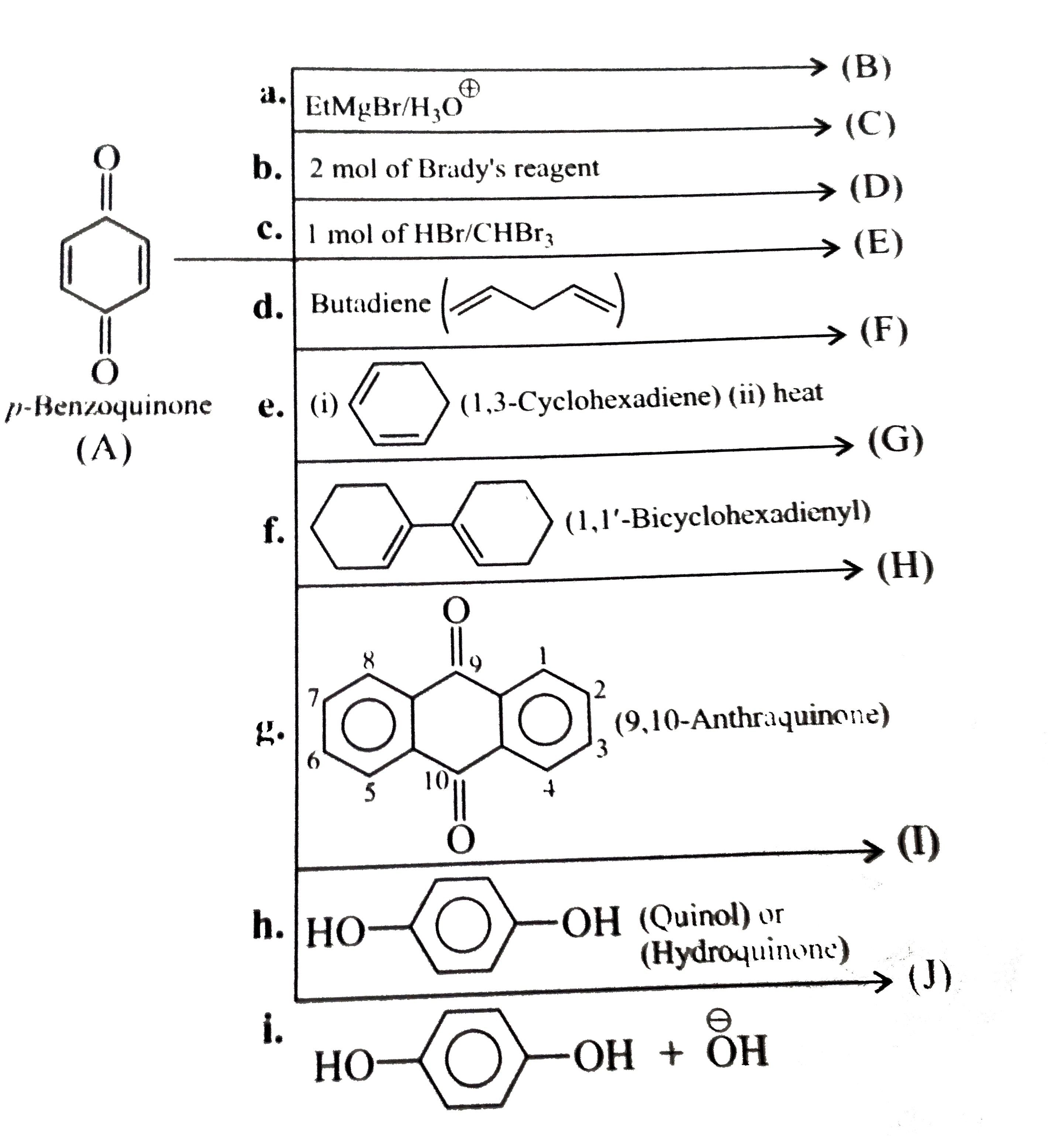 View Solution
View SolutionI. Synthesies the anti-oxidant food preservatives:
a.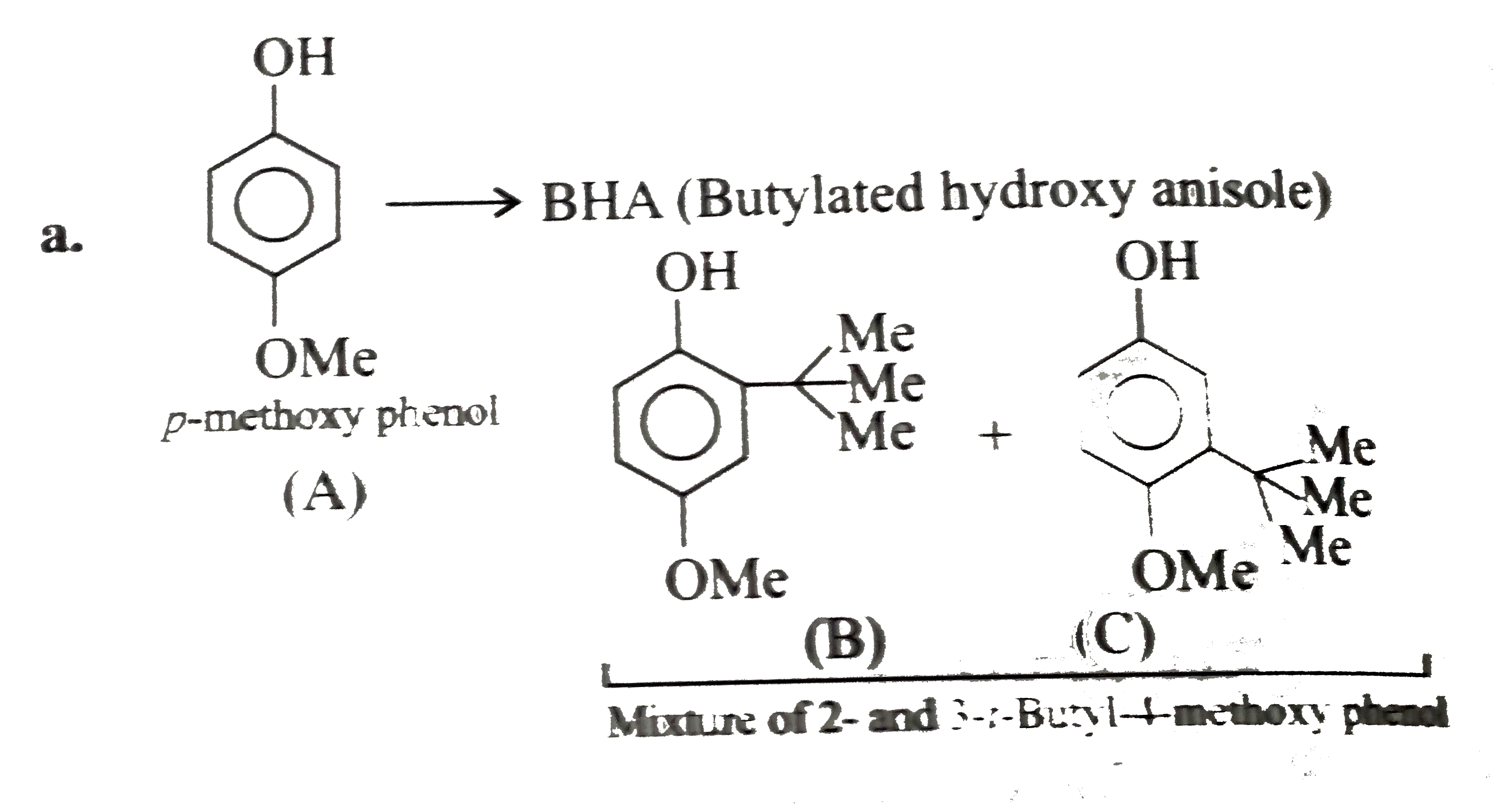
b.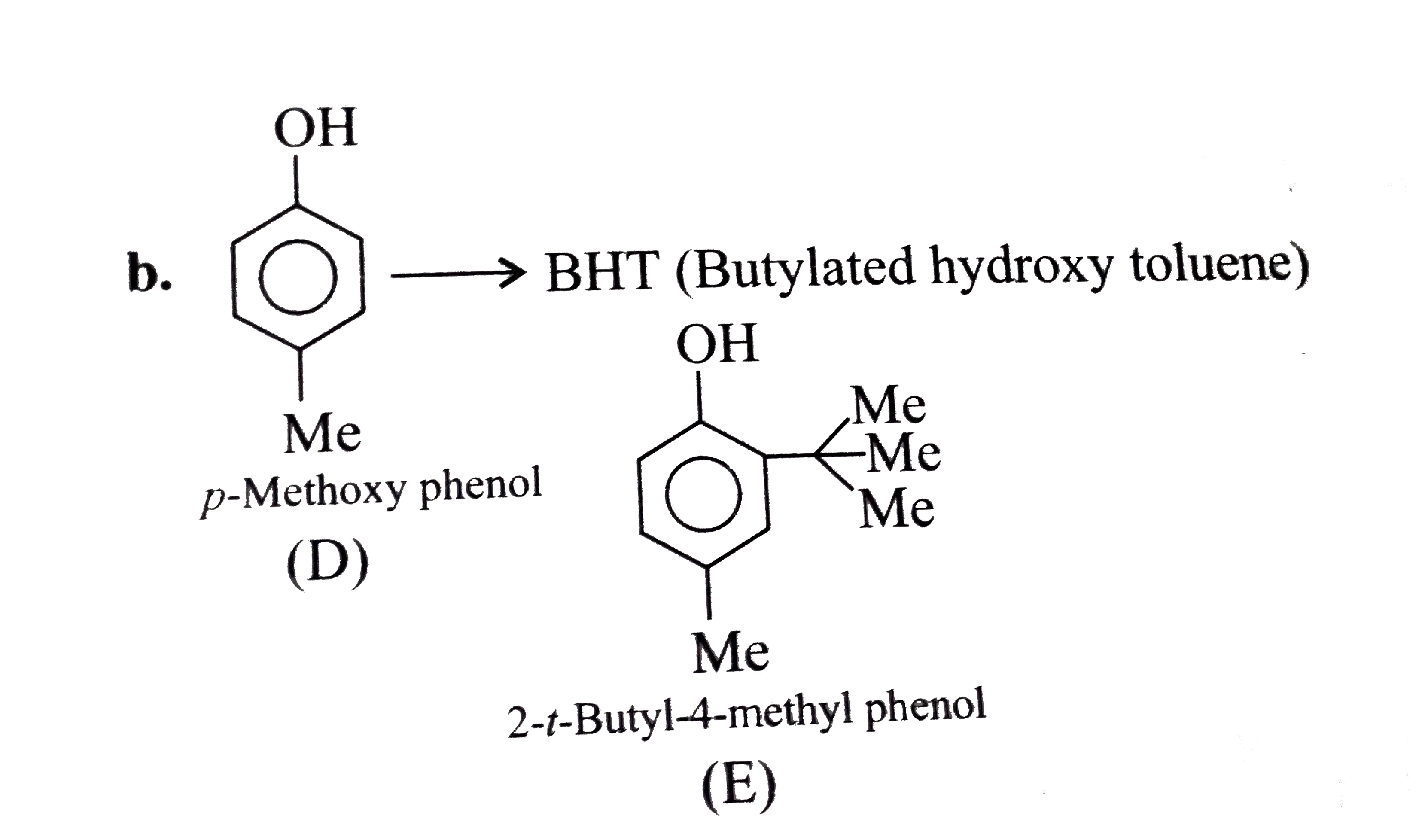
II. Complete the following reactions:
a.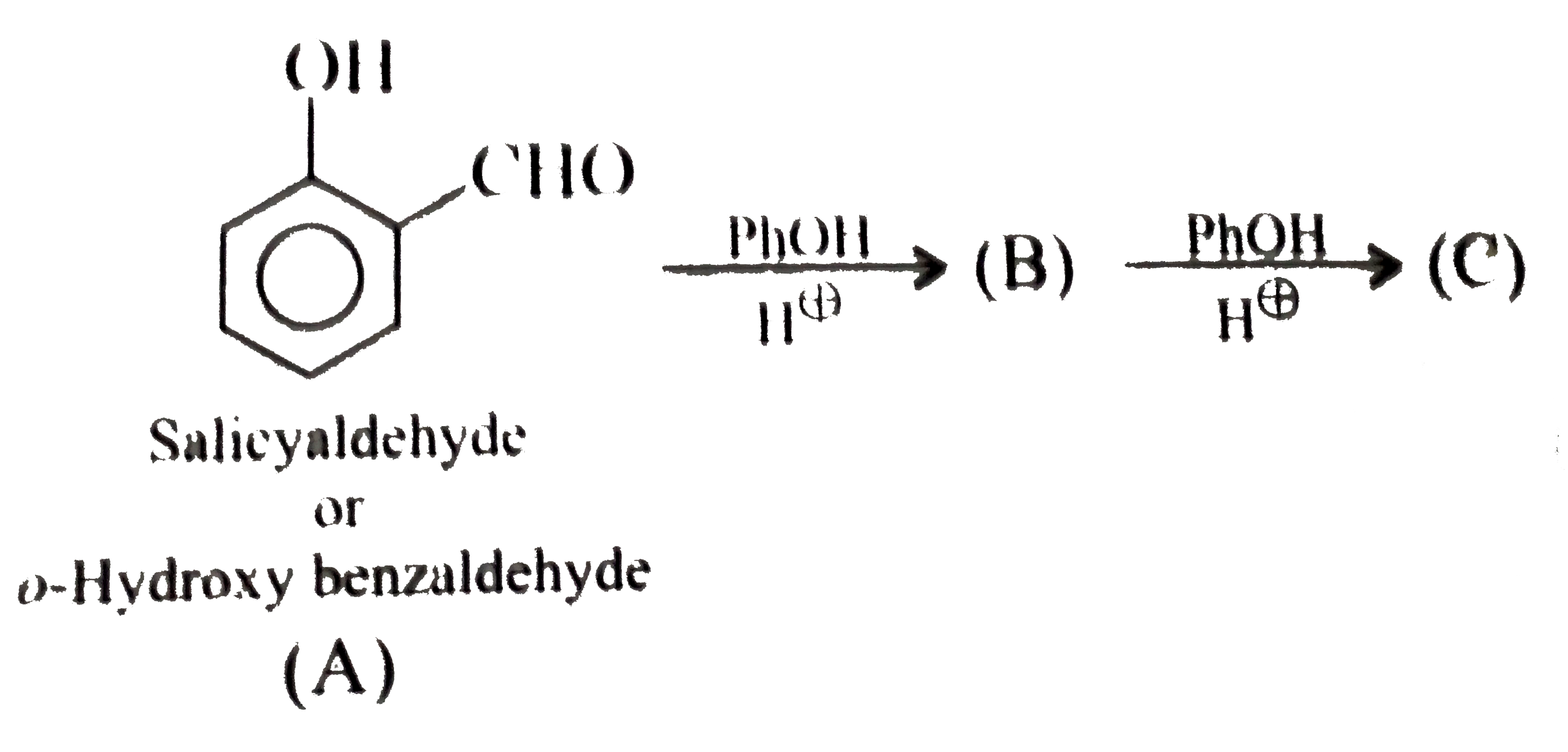
b.
c. n mol of (C) + n mol of (F) `rarr` (G) (polymer)
d. `overset (PhOH) underset ((A))` + `overset (3CH_(2)) underset ((B))`=O `overset (H^(o+)) rarr` (C) `overset (H_(2)//Ni) underset (Delta, pressure) rarr` (D)
e.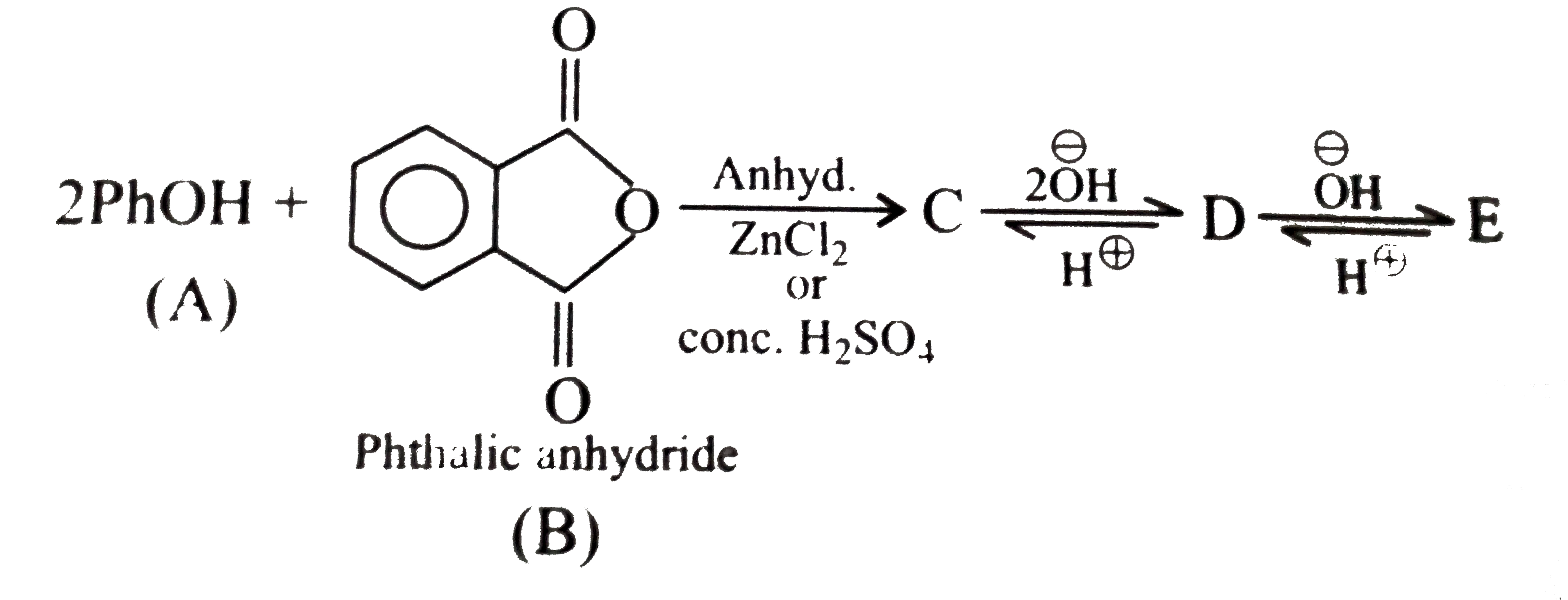 View Solution
View SolutionComplete the following reaction:
 View Solution
View SolutionExplain the formation B and C, optically pure different isomers form (A) with little recemisation.
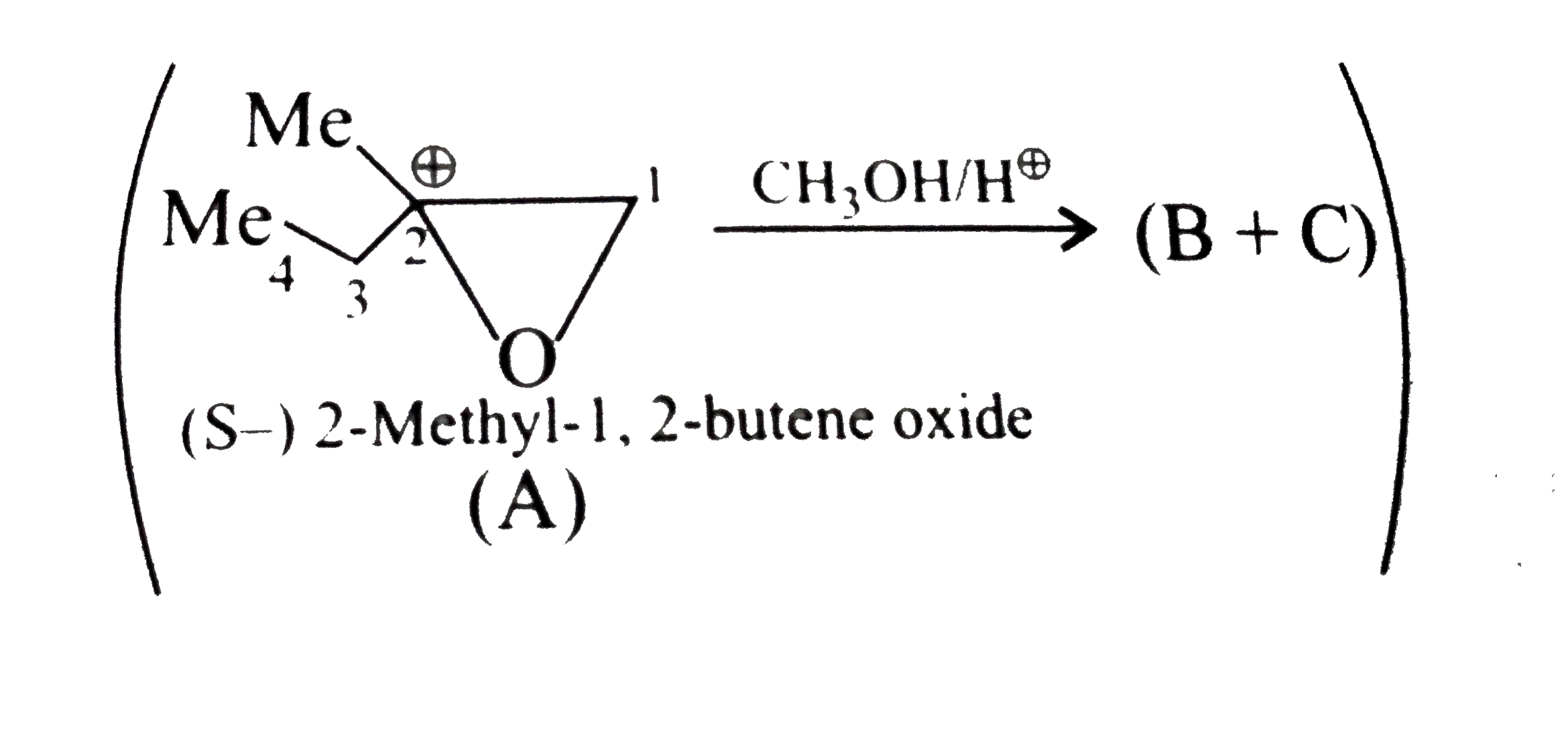 03:44View Solution
03:44View SolutionComplete the following reaction:
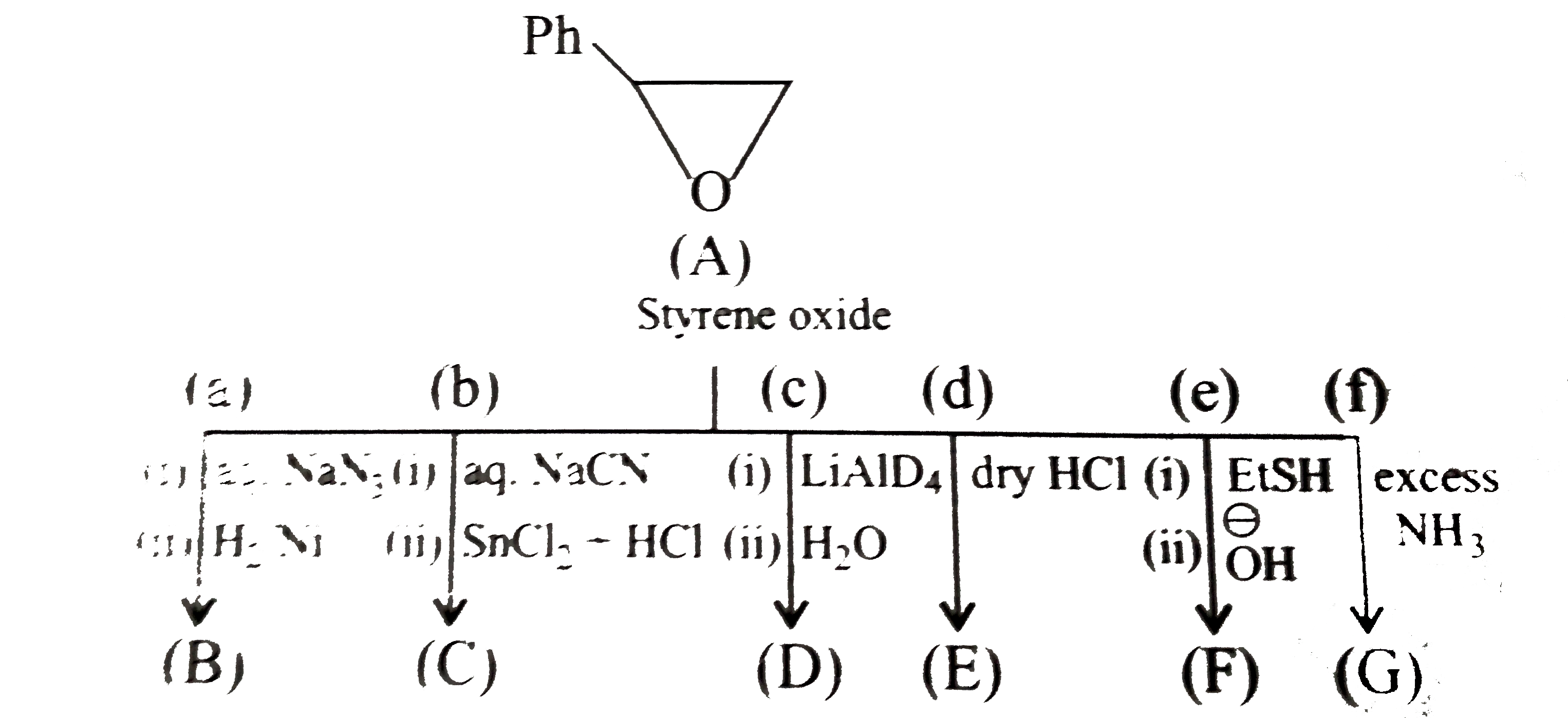 View Solution
View SolutionComplete the following reaction:
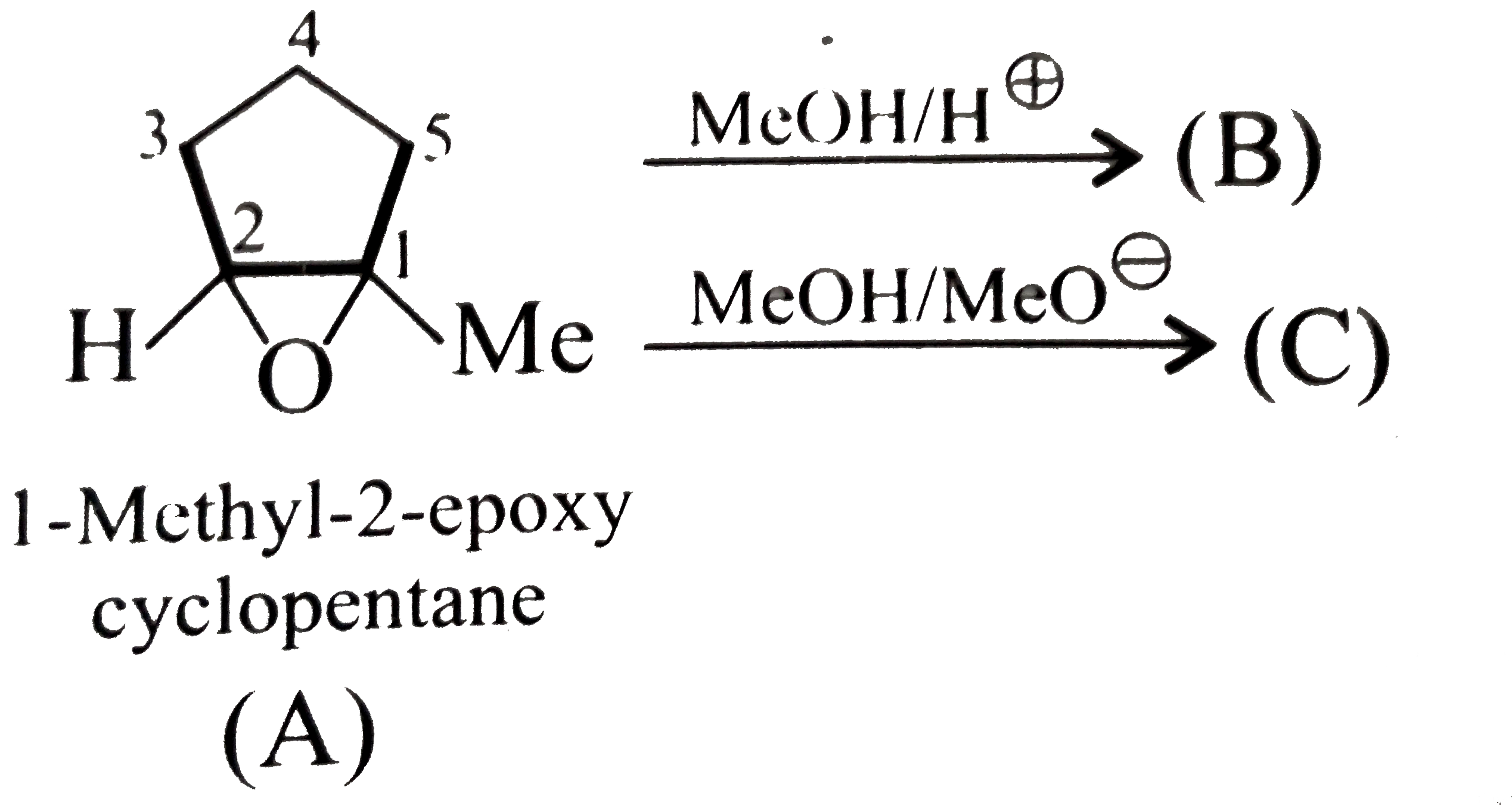 03:54View Solution
03:54View Solution
Illustration questions and complete solutions for chapter ALCOHOL,PHENOL AND ETHERS of CENGAGE CHEMISTRY (HINGLISH) of Class 12
All Exercises from CENGAGE CHEMISTRY Class 12 CHEMISTRY ALCOHOL,PHENOL AND ETHERS
- Archives Analytical And Descriptive
- Archives Assertion-Reasoning
- Archives Fill In The Blanks
- Archives Linked Comprehension
- Archives Multiple Correct
- Archives Single Correct
- Archives True/False
- Exercises Assertion-Reasoning
- Exercises Concept Application
- Exercises Linked Comprehension
- Exercises Multiple Correct
- Exercises Single Correct
- Exercises Subjective
- Illustration
- Solved Examples
